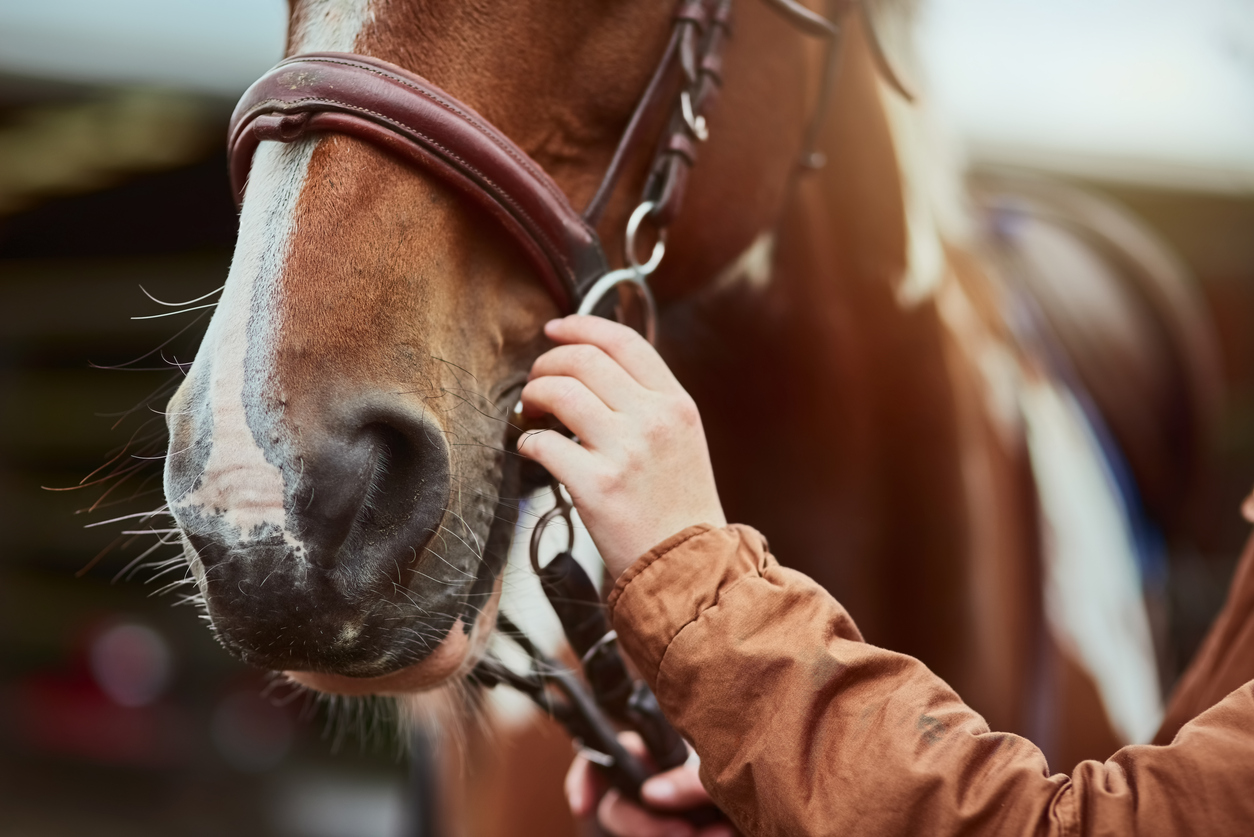

Horse Supplements
Sections

Everything You Need to Know About Horse Supplements
If you were planning to spend the day laying on the couch, you wouldn’t grab a protein shake to start your day, would you?
Just like any living thing, horses need a balanced diet that includes minerals, vitamins, and other nutrients to make them happy and healthy. However, all horses are unique, kind of like snowflakes. Whether you have a sport horse competing at a high level, or a leisure horse that is enjoying its golden years, you’ll want to be sure you’re supplementing its diet with all the right stuff.
But how do you choose the right horse supplements?
We’ve got you covered. In this ultimate guide, we’ll identify everything you need to know about horse supplements and how they can benefit your horse’s health at every stage. Plus, we’ll get into the basics of maintaining your horse’s health, including ways to reduce symptoms of painful conditions like arthritis using a joint supplement for horses. We’ll even cap it off with a top ten list of our favorite supplements so you can skip the hours of research and get right to maintaining better horse health through supplementation.
So let’s saddle up and get into it!
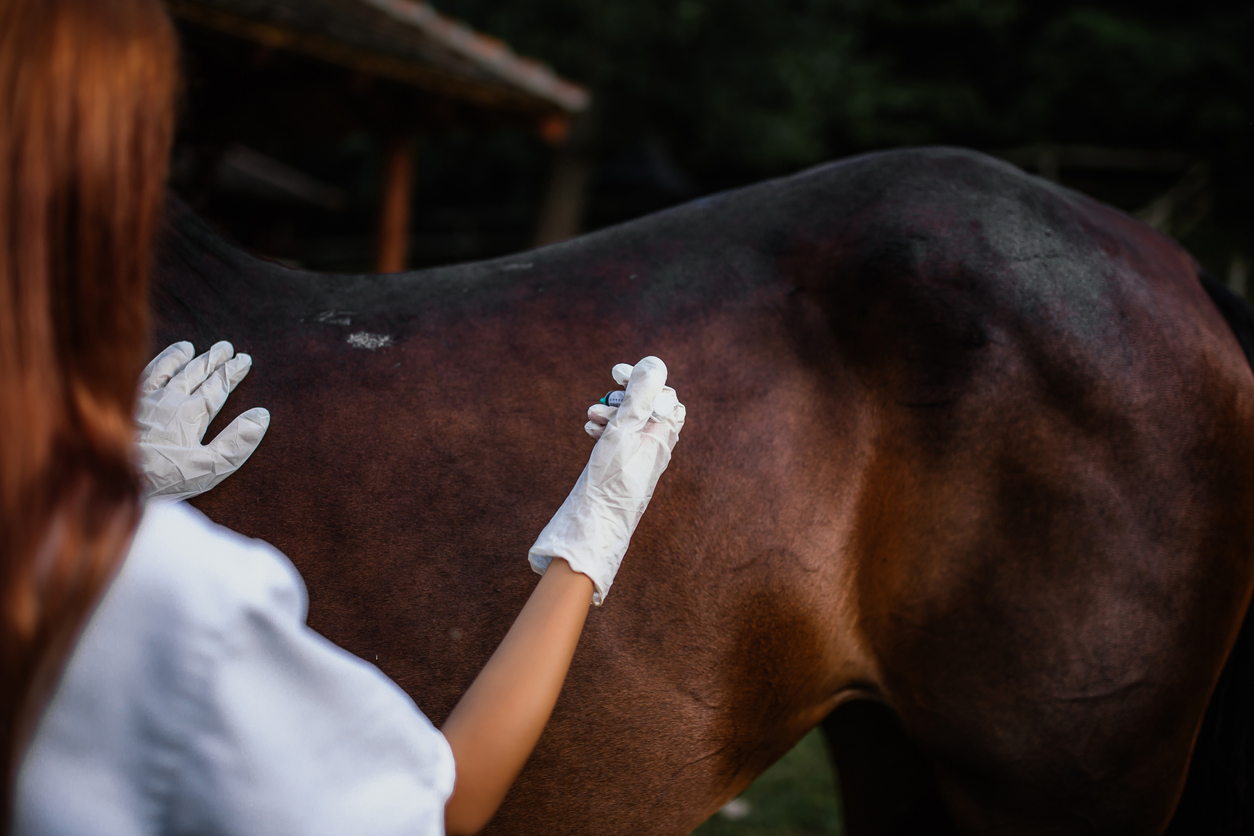
Overview of Horse Health Care
There’s neigh doubt about it — you want to care for your horse as best as you can, but how do you even know where to start?
When it comes to horse health care, it’s all about the right balance of preventative care, nutrition, exercise, and rest.
There are also plenty of horse health problems and chronic conditions to watch out for as well, and common muscle and joint challenges that can affect horse health overall (more on that next).
Horse Joint Health
Horses have a lot of weight-bearing down on their joints. When you add in the force from jumping or racing — now that’s a lot of pressure!
There are three main points to understand when it comes to joint health:
- Horses in sport are more likely to be injured and overexerted.
- Horses in sport are more at risk for arthritis.
- Leisure horses are more likely to be overweight and out of shape.
Once you know where your horse falls, you can more easily understand their specific joint health needs.
TRI-ACTA for Equine
Providing preventative support for younger horses and helping mitigate the early onset of joint degeneration and other mobility issues.
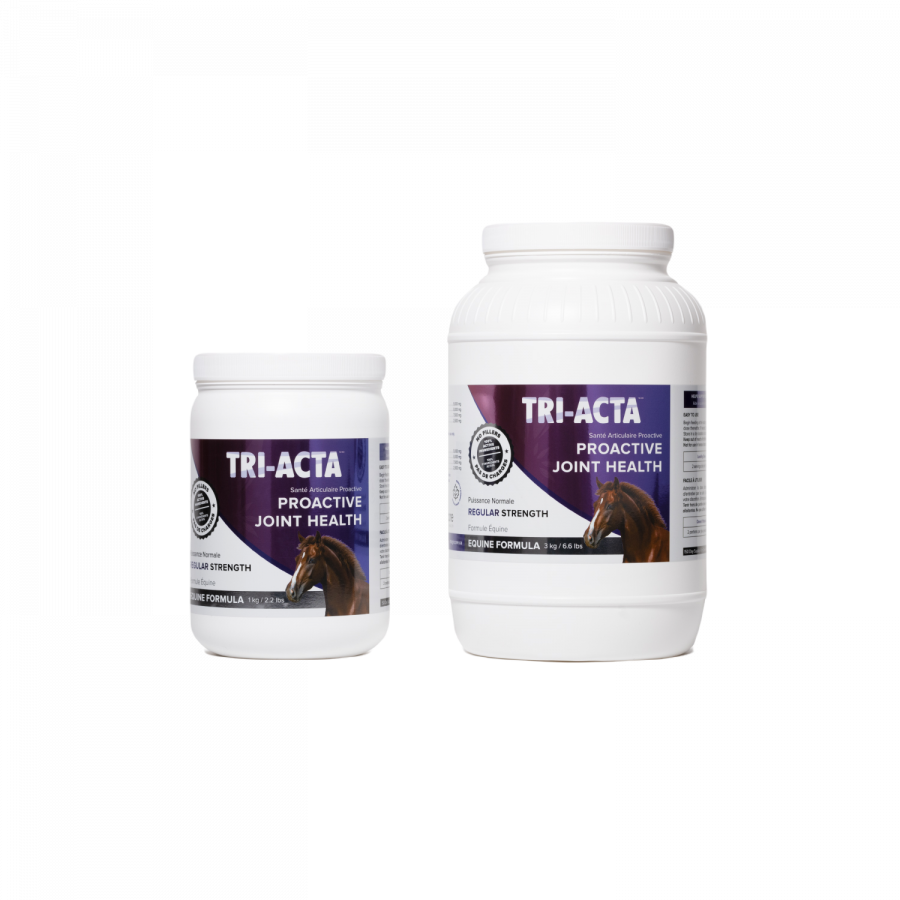
Horse Muscle Health
There’s no one system in your horse’s body that is more important than another, but muscles are pretty high on that list.
Muscles are tissues in your horse’s body that allow your horse to walk, gallop, jump, and canter. In essence, muscles are the foundation of all movement, so it’s vital that you learn how to maintain animal muscle health if you want your horse to live their best life.
There are three different types of muscles you should know about:
- Cardiac muscles keep your horse’s heart beating.
- Skeletal muscles attach to your horse’s bones and pull at tendons, allowing your horse to move.
- Smooth muscles help facilitate involuntary processes in the body, such as blood moving throughout your horse’s circulatory system.
These muscles are all connected and work together to make things happen for your horse through a series of chain reactions. When one muscle contracts, another relaxes, which causes movement.
In addition to your horse’s muscles, tendons and ligaments are also crucial components of horse muscle structure:
- Tendons connect muscle to bone.
- Ligaments connect bone to bone.
Without tendons or ligaments, your horse wouldn’t be able to move because there wouldn’t be anything linking your horse’s muscles to their bones, or their bones to other bones (like in the knee, for instance) to facilitate movement.
The thing is, these critical muscles can sometimes face challenges in the form of muscle diseases, called myopathies.
Some myopathies include:
- Muscle spasms in horses.
- Nutritional deficiencies due to diet.
- Muscle atrophy (loss or thinning of muscle tissue).
Spending time learning more about horse muscle problems is just one place to start. You can always consult with your veterinarian if you’re not sure what’s affecting your horse’s health and how you give them the best care.
Horses Hock
Lameness in the horse’s hock joint is one of the leading causes of changes in gait. The horse's hock is located on the hind limbs of a horse above the cannon bone, connecting the tibia to the tarsal bone. It looks like a reverse knee but is actually equivalent to the human ankle. The hock is comprised of four joints and several small bones.
The four joints in the horses hock are:
- The tibiotarsal joint
- The proximal intertarsal joint
- The distal intertarsal joint
- The tarsometatarsal joint
A horse’s hock functions to aid in the movement of the back legs so your pony can walk, trot, gallop, and canter. As you can imagine, such an important part of the equine anatomy can cause serious complications for your horse if something happens to it.
The most common horse's hock health concerns and anomalies are:
- Hock arthritis in horses
- Fused hock joints in horses
- Capped hock in horses
- Bog spavin horses hocks
- String hock in horses
- Hock injuries in horses
Depending on the type of health concern or anomalies, your horse may experience different symptoms. The most common symptoms of horse hock problems include lameness, swelling, pain, and changes in standing position.
The most routinely recommended treatments for horse hock problems are horse joint supplements and horse joint injections.
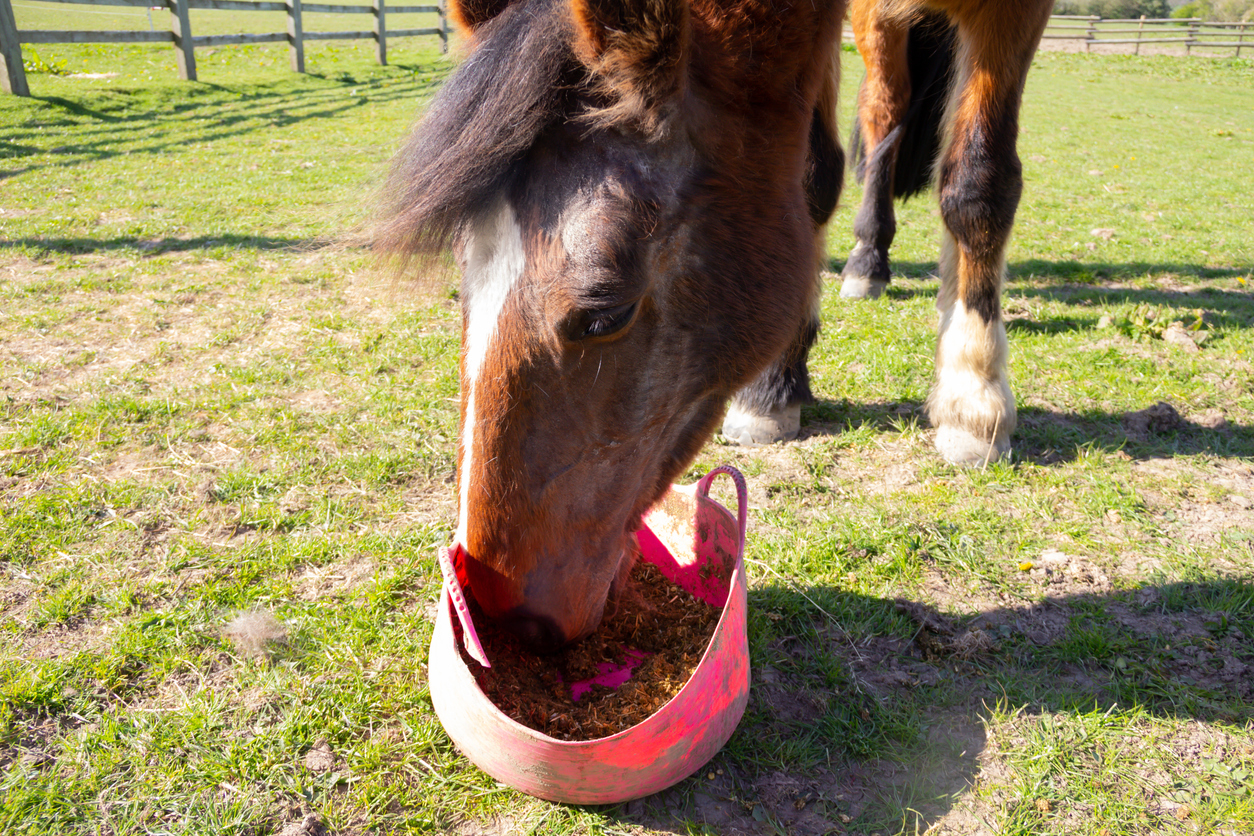
Equine Nutrition
Everyone can benefit from a balanced diet, even your horse.
But what’s in a balanced diet for horses?
Horses need a fine balance of nutrients, forage, and concentrates, but things like fruits and vegetables as well as horse supplements can also contribute to a well-rounded diet.
In the table below, we broke down the main components for healthy equine nutrition, and how they impact your horse.
|
Component of Balanced Equine Nutrition |
Examples |
Why It’s Important |
|
Nutrients |
|
Each basic nutrient plays a key role in rounding out overall nutrition. Not all of these can be sourced from forage, so close attention should be taken across the board. |
|
Forage or Roughage |
|
Main component of a horse’s diet and digestive system and is designed to get nutrition from grassy stalks. |
|
Concentrates |
|
Make up shortfalls in horses’ diets by adding extra nutrition, depending on the horse’s needs. |
Horses consume two quarts of water (about two litres) for every pound of hay they consume. The average 2,000-pound horse eats 15-20 pounds a day; that’s 30-40 quarts (around 38 litres) of water needed to hydrate your horse.
Fats can be added to a horse diet to increase the energy density of the diet. Horses that engage in regular exercise need increased fat in their diets to optimize health and performance.
Carbohydrates are the main energy source used in horse feeds. Soluble carbohydrates such as starches and sugars are readily broken down to glucose, one of the most essential nutrients for joint health.
Protein is important for muscle development in growth and exercise. Soybean meal and alfalfa are great sources of protein that can be added to a horse diet.
Horses require a mix of fat-soluble (vitamins A, D, E, and K) or water-soluble (vitamin C and B-complex) vitamins. Most of these vitamins are found within green, leafy forages.
Minerals are required for the maintenance of a horse’s body structure. These include small amounts of the macro-minerals such as calcium, phosphorus, sodium, potassium, chloride, magnesium, and sulfur. Most horses consuming fresh green pasture or premixed feed consume enough minerals in their daily diet.
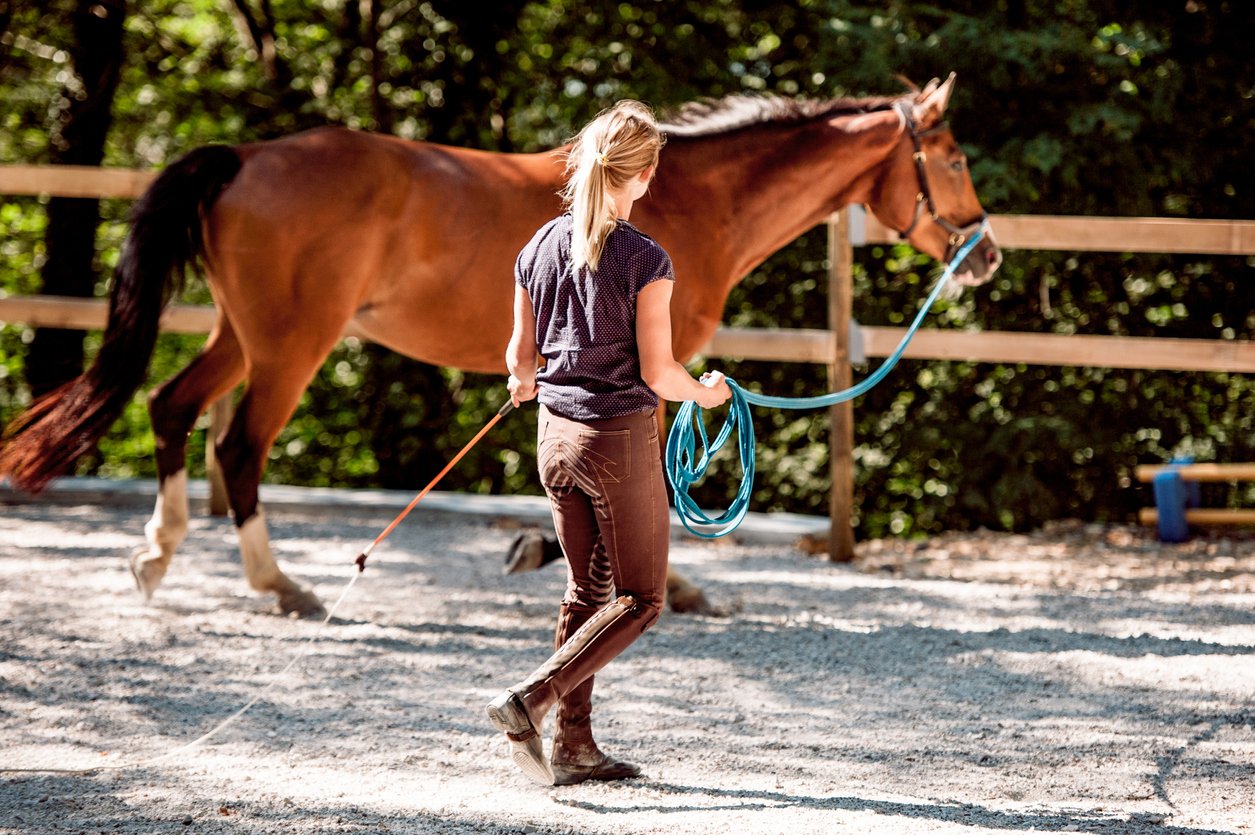
Horse Exercise
Whether you have a young athletic pony or an arthritic senior horse, horse exercise is a crucial part of horse health to prevent joint issues and injuries. Equine mobility exercises are an important part of conditioning and strengthening your horse for optimum performance.
If you have an old horse or an arthritic horse, consider the following steps for a regular low-impact horse exercise program:
- Warm-up: 10-15 minutes of in-hand walking before you mount
- Stretches: Perform light leg stretches after the horse is warmed up
- Lunges: Start slowly with lunging circles and increase intensity over time
- Footing and terrain: Choose soft footing and flat terrain
- Gentle riding style: Avoid small circles, sharp turns and abrupt stops
- Cool-down: 10-15 minutes of in-hand walking
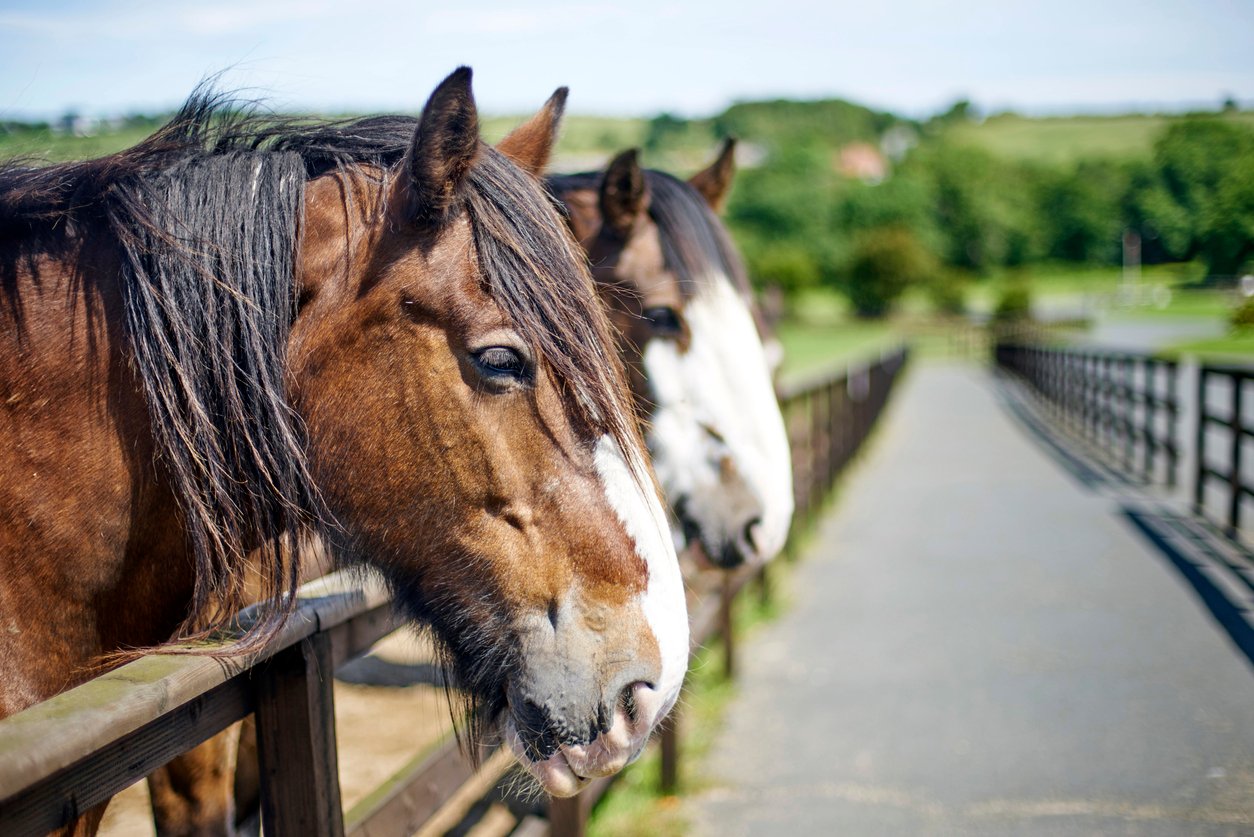
Senior Horse Care (Old Horse)
Horse health care changes as your horse ages, so naturally, your old horse may need specialized care as they ride into their golden years. 70% of horses over 20 years old have some type of health issue that requires either management or vet attention.
So obviously, you can’t horse around when it comes to caring for your old horse.
But what’s best for an old horse’s health?
The answer is a careful balance between monitoring old horse health and providing preventative and curative care when needed.
When monitoring your old horse common signs and symptoms to watch for include:
- Poor eyesight
- Gray hair
- Less muscular or loss of muscle mass
- Stiffness, especially in the morning
- Excessive weight loss or gain
- Loss of molar teeth and elongated incisors
Along with the physical signs of aging, an old horse is at increased risk of general infections and common illnesses.
These common illnesses in senior horses include:
- Pituitary Pars Intermedia Dysfunction (PPID)/ Cushing’s Disease: An endocrine disorder affecting the hormones needed to regulate bodily functions
- Arthritis: degeneration of the cartilage between the joints
- Dental issues: Teeth become worn down and lose the ability to grind down food
- Laminitis: inflamed soft tissue in the hoof
Ensuring your old horse has the care they need as issues arise is one thing, but potentially helping to avoid these painful, long-term issues can be addressed by taking preventative measures.
Preventive measures to keep your old horse spry include:
- Modifying their diet to a senior horse diet.
- Using equine supplements.
- Providing adequate hoof care.
- Maintaining hydration.
- Visits with an equine dentist.
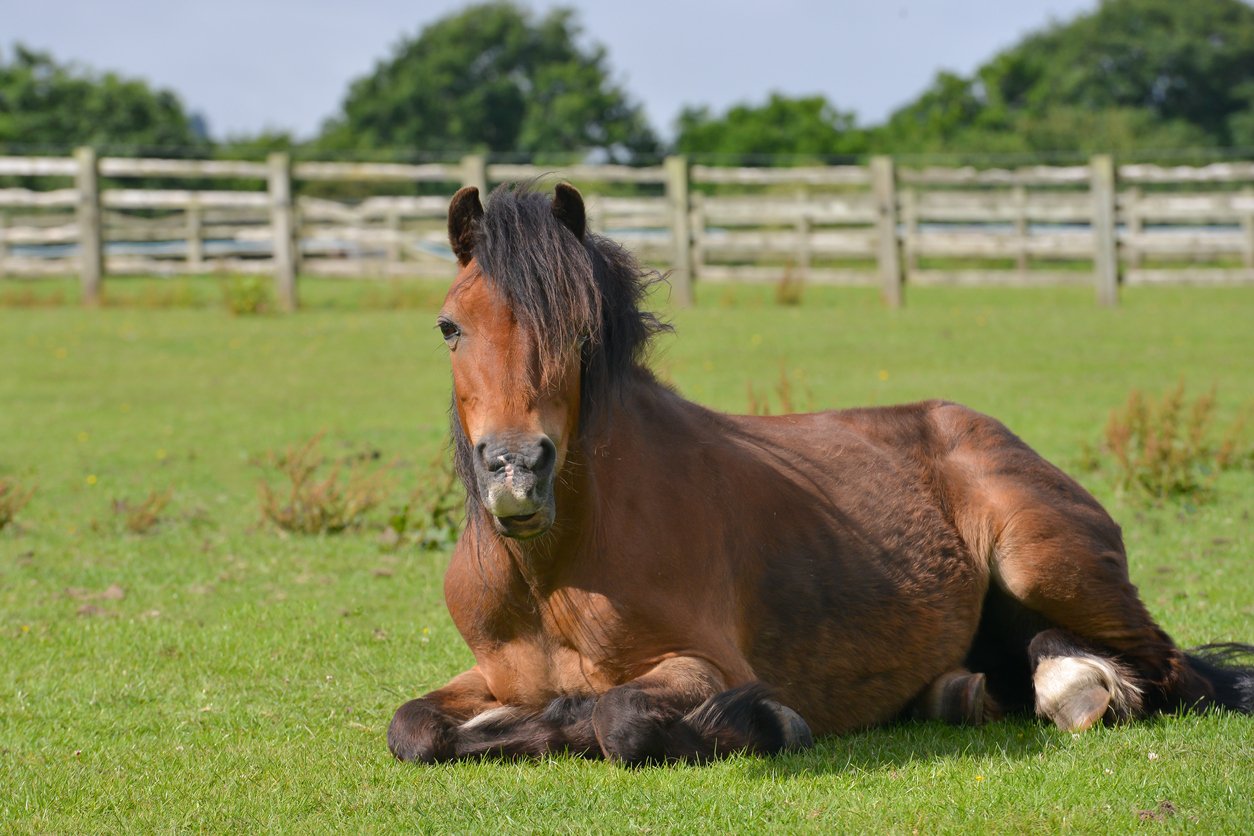
What is a Lame Horse?
When people refer to a lame horse, it can mean many things.
In short, the American Association of Equine Practitioners says that a lame horse is a horse that has a change in gait. While a change in your horse’s gait may not sound too serious, if left uncared for, a lame horse can result in more serious health consequences and, potentially the need for euthanasia.
More specifically, lameness means that your horse is reacting to pain somewhere in its limb and because of that, they change their stance. Eventually, movement is impacted.
Afflictions that can cause lame horse symptoms include:
- Pain from bruising, lacerations, tendon and ligament issues, or bone and joint injuries.
- Infections leading to a loss of balance.
- Poor nutrition from eating too much or too little of certain nutrients.
Lameness can stem from any part of the limb and, if left untreated, can affect issues elsewhere down the limb and adjoining parts of the body.
Symptoms alongside limping may include:
- Decreased ability to walk or run
- Unwillingness to move
- Bobbing head
- Imbalanced standing
Sometimes, signs of a lame horse can be hard to notice because they are subtle. Paying close attention to their behaviour is one surefire way to stay on top of their health.
Lame horse can lead to significant problems down the road if left unchecked, with adverse side effects that may include:
- Loss of limb use
- Ongoing pain
- Poor performance
- Immobility
The best thing you can do to prevent horse lameness is to make it your responsibility to examine your horse regularly as a component of good horse health care and seek attention from a veterinarian if your horse is acting out of the ordinary.
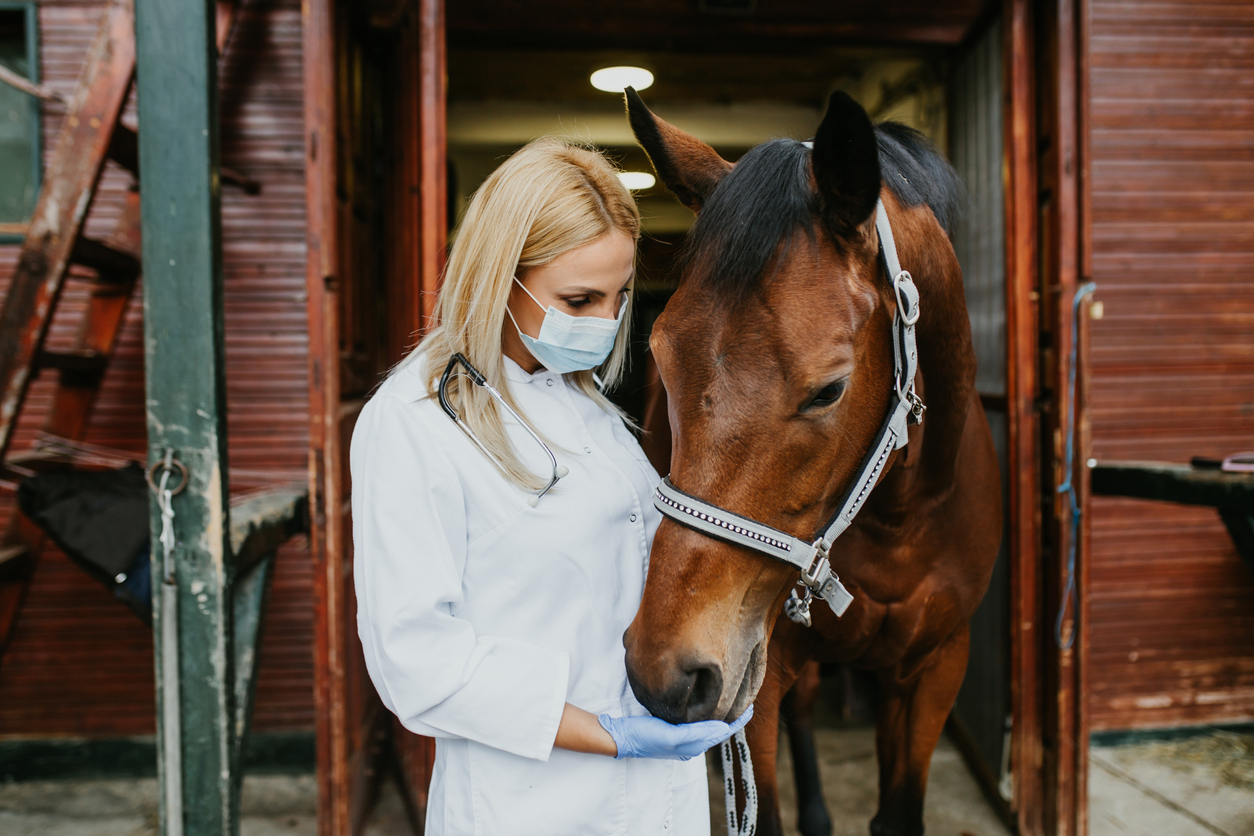
Common Horse Health Problems
Just like humans, no two horses are alike.
However, there are still plenty of common horse health problems that affect many horses, and the more you know about these health problems, the better you can spot them and get treatment for your equine pal ASAP.
Allergies
Just like humans, there are different kinds of allergies in horses:
- Environmental allergies (pollen, mold & dust)
- Insect or pest bites
- Food allergies
- Sweet itch (resulting from culicoides bites)
When you notice hives, rashes, or respiratory problems, it’s time to call your equine veterinarian because equine allergic reactions can result in deadly reactions such as anaphylaxis.
Colic
Colic refers to severe gastrointestinal pain. It indicates a painful problem in your equine pal’s gastrointestinal tract and can be unpredictable. Usually, it is due to impaction of varying degrees in the colon. You could say that horses have tummy troubles often, as they are prone to colic.
Thrush
This common horse health problem is definitely unpleasant for your equine pal to experience.
Thrush is a bacterial or fungal infection in the horses’ hooves, specifically in the central and lateral sulcus of the frog (located on the bottom side of the horse’s hoof).
It typically occurs because of damp or moist stall conditions and is diagnosed with a simple visual examination. Treatment involves making sure their tetanus shots are updated, clearing the affected area of the infection, and then cleaning it daily. Keeping your horse in a dry, clean stall during recovery is also essential.
Horse Muscle Spasms
The name Charley horse has to come from somewhere, and just like we have painful muscle cramping, our equine pals do too.
Horse muscle spasms and cramps happen for a variety of reasons. Sometimes, it is due to electrolyte imbalance, nervous system misfires, an infestation of ear ticks, or a condition called “shivers.”
No matter the cause, look for strange behaviour, twitching or spasming muscles, inability to walk correctly, or even sudden falling over.
Back Problems
Muscle and ligament strain on their bodies while ridden can create severe back pain for your horse. There are also more severe degenerative back conditions in horses like arthritis and Kissing Spine syndrome that need attention from your vet and likely some physical therapy.
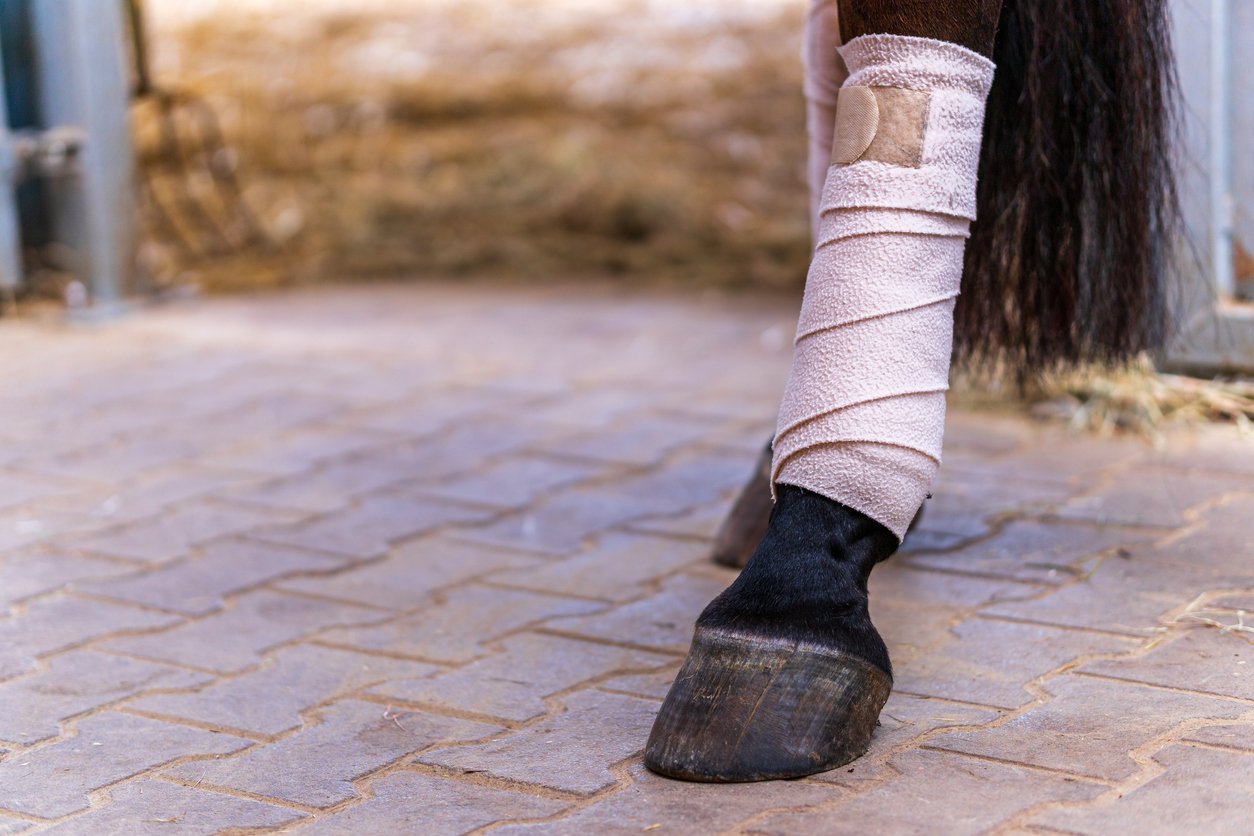
Understanding Horse Joint Problems
You know just how important horse joints are to their overall health if you're a horse owner. So naturally, knowing what to look for when it comes to horse joint problems or a horse injury is essential.
Arthritis in Horses
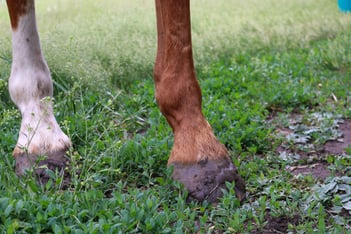
Arthritis, sometimes referred to as osteoarthritis, is a condition mostly affecting older horses, averaging 15 years old or older. Though that's not to say younger horses can't be affected by arthritis.
Arthritis is inflammation in the joint that can make anyone, horse or human, feel pain and stiffness when they move.
Symptoms
If your horse is affected by arthritis, symptoms can look like:
- Stiffness in the morning that dissipates after some light movement
- Swelling, pain, or stiffness in and around the joints
- Pain and stiffness that worsens after long periods of inactivity
- Smaller range of motion
A vet should examine your horse to see how severe the arthritis is and determine the next steps in managing and treating the condition.
Causes
Chronic arthritis happens when the bone surfaces don't heal properly and aren't cushioned with soft tissue adequately.
Acute arthritis is slightly different, and it's usually caused by infection or injury. Prevention tips for delaying the onset and reducing risk of arthritis include:
- Give your horse a balanced diet, including a joint supplement.
- Avoid working young horses too hard to the point of overexertion.
- Have a good routine with your farrier.
- Monitor their behaviour closely as they age.
- Feed equine arthritis supplements that promote healthy joints.
Make sure to exercise your horse properly by giving them enough time to warm up and down before and after a ride.
Treatment Options
Early intervention is key to managing inflammation caused by arthritis, and there are several common pathways for treatment, outlined in the chart below:
|
Equine Arthritis Treatment |
How it’s Administered |
Benefits |
|
NSAIDs (non-steroidal anti-inflammatory drugs) |
Oral paste, tablets, liquid or powders |
|
|
Topical Creams |
Cream applied directly to the affected area |
|
|
Corticosteroid Injections |
Steroid injection into the synovial fluid of the affected joint(s). |
|
|
Orally through powders, pellets or liquids |
|
Sacroiliac Horse Pain (SI Joint Problems in Horses)
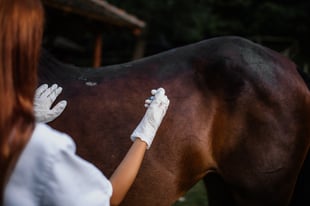
The joint where the pelvis and spine meet in a horses’ hindquarters is known as the sacroiliac horse joint or simply the SI joint in horses. This is the powerhouse of your horse’s body — transferring the action from their hind legs into a forward motion through their back, propelling them forward.
Preventing injury to the sacroiliac joint is key to keeping your horse happy and healthy.
Symptoms
Some common changes in behaviour and movement can be indicators of horse sacroiliac pain, including:
- Reluctance to move forward.
- Constantly rigid or tensed back.
- Throws you or other rides up and forward.
- Reluctance to take the bit.
- Having trouble with lateral work.
- Canter is off or crooked.
- Bucking or kicking out.
- Refusal to jump or canter as usual.
Causes
Most of the SI joint problems in horses are caused by wear and tear. Certain activities, like show jumping and performance sports are more likely to cause your horse sacroiliac pain over time. But overall, problems in the SI joint in horses are very common. In fact, in one survey alone, half of the horses experiencing back pain in the study had SI joint problems as the underlying cause!
Prevention
Injury to the joint, especially repetitive strain injuries, is at the heart of SI joint problems.
Preventing injury is the ticket to preventing horse sacroiliac pain — but how do you do that?
In this case, “slow and steady wins the race” couldn’t be more true!
A healthy and complete diet goes a long way in supporting your horse’s joint health. Using a joint supplement like TRI-ACTA also ensures that the SI joint is supported, and is a great preventative aid for SI injuries.
TRI-ACTA for Equine
Providing preventative support for younger horses and helping mitigate the early onset of joint degeneration and other mobility issues.

Treatment Options
Generally, there are three important goals that need to be considered when addressing SI joint problems:
- Reduce inflammation in the joint using NSAIDs, joint supplements like TRI-ACTA H.A., or other forms of medication like SI injections in horses.
- Reduce exercise to prevent overexertion. Light exercise can help stretch the muscles but too much can do harm.
- Allow turnout in a small paddock with even ground and no obstacles so they can move gently and easily.
Locking Stifle Horse
A stifle horse injury is most common in active horses and occurs during high-intensity activities like racing and jumping. Stifle horse injuries can also happen when a horse has underdeveloped muscles surrounding the joint or a condition that worsens over time.
Locking stifle horse happens when your horse locks their knees. When the unhooking of the joint does not happen, the patella becomes stuck in an upward position, the horse’s leg stays in an extended position. It is more common in younger horses, and some grow out of it as they get older and receive more strength and conditioning.
Symptoms
It’s important to know what to watch for in cases of locking stifle.
Symptoms of locking stifle include:
- Minor lameness
- Hesitancy or delayed movement (especially if they’ve stood still for a long time)
- Stumbling on downhill slopes
- Problems cantering or changing leading legs
- Discomfort or unwillingness to do circle work
Causes
Lots of experts correlate rapid growth spurts with the development of locking stifle. However, preventable conditions like obesity, poor nutrition, and lack of fitness are also potential causes of locked stifle joints.
Prevention
Not all cases of locking stifle joints are caused by something preventable. Sometimes, it is related to specific breeds, or conditions.
Locked stifle joints are common for:
- Ponies
- Foals
- Unfit horses
TRI-ACTA for Equine contains glucosamine, chondroitin, and MSM all of which are proven to support joint health in horses. This supplement is great for younger horses or horses who haven’t experienced a joint issue before. This can help prevent and reduce symptoms of locking stifle in your horse.
Treatment Options
Treatment typically involves a combination of rest, medicine, and physical therapy.
NSAIDs (non-steroidal anti-inflammatory drugs) can help ease symptomatic pain, while physical therapies can help recovery in the long term.
TRI-ACTA H.A. is a specially formulated option to support the joint health of horses who are ageing, currently experiencing joint issues, or regularly engage in activities that can put a strain on their joints. The hyaluronic acid added in this formula can improve the supply and viscosity of the synovial fluid and help with a locking stifle.
TRI-ACTA H.A. for Equine
Our maximum strength formula is perfect for horses that are ageing, experiencing arthritis and stiffness, are in training and competition, or under a heavy workload.
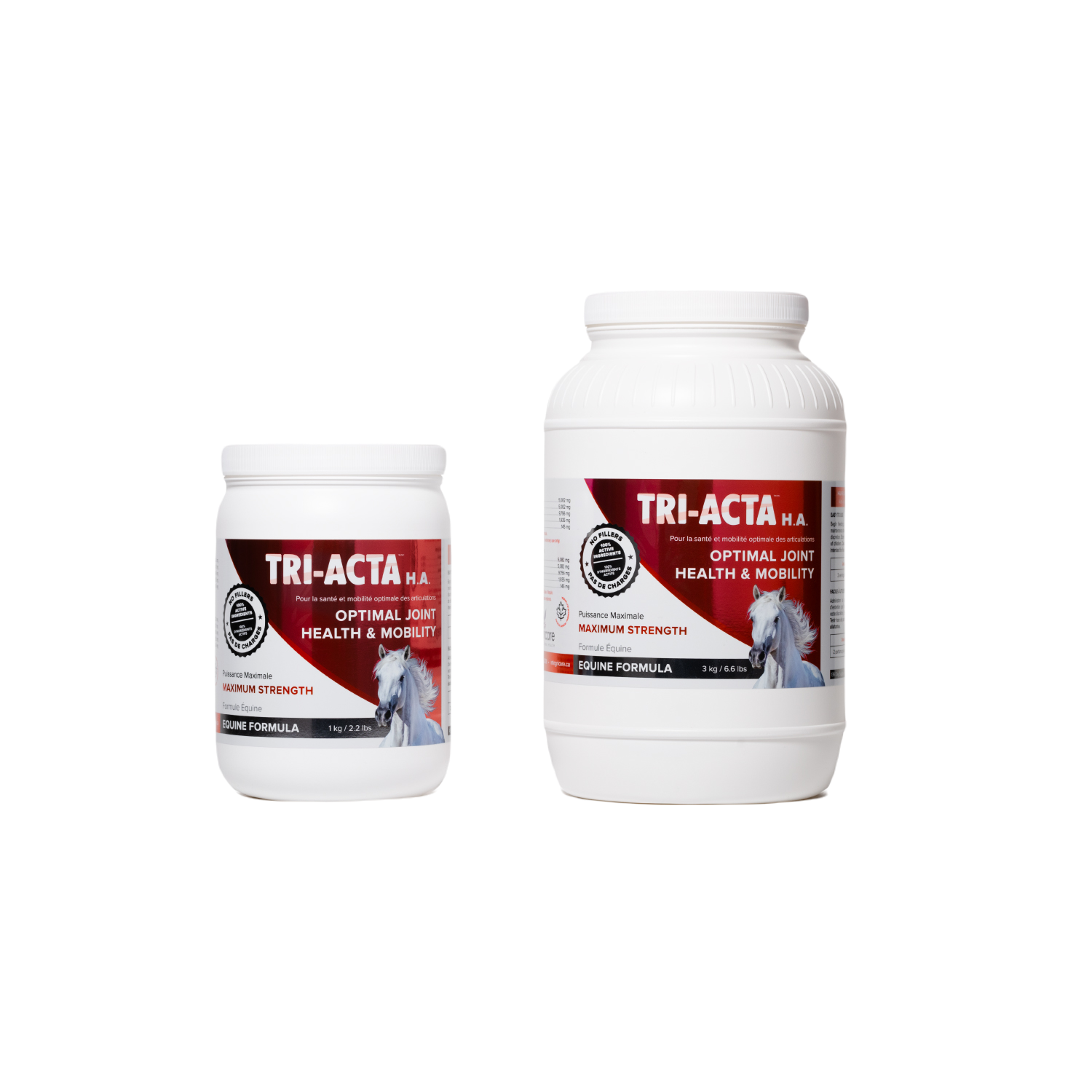
Splint Bone Horse
Splint bones are rudimentary metacarpal (forelimb) or metatarsal (hindlimb) bones that run along each side of the horse’s cannon bones. The splint bones connect the horse’s hock to the fetlock; they bear some weight and provide support to the cannon bone.
“Splints” refer to any type of horse injury that affects the splint bones. Splint bone injuries include:
- Saucer fractures: Micro-fractures causing sore or bucked shins
- Horse bone splints: Inflammation caused by proliferative bone growth
- True splints: Trauma to the suspensory ligament
- Splint bone fractures: Fractures resulting in two or more fragments of bone
Splint bone fractures are one of the most common splint bone injuries. These fractures are typically caused by direct external trauma.
Symptoms
Splint bone fractures occur anywhere along the length of the bone. Fractures on the lower half of the splint bone are more common in sport performance horses and occur during exercise.
The symptoms of a splint bone horse fracture sometimes include:
- Lameness
- Heat
- Swelling
- Wound present in the affected area
Causes
There are several possible causes of a splint bone fracture in horses:
- Direct trauma
- Strenuous exercise
- Poor confirmation or hoof balance
- Repetitive movement
- Heavyweight horse or rider
Splint bone fractures may go unnoticed. In some cases, the bone fragments migrate, causing the fracture to heal improperly.
Prevention and Treatment Options
To prevent splint bone injuries, it is best to manage your horse’s exercise program to ensure they aren’t overworking their limbs. Managing your horse’s weight can also prevent many common horse injuries, including splint bone fractures.
Standard rest protocols are the golden star of treatment options:
- Rest your horse for at least 30 days
- Confine to a stable
- Ice the injured area
- Slowly re-integrate low-impact exercise
You may also want to explore options for horse joint supplements like TRI-ACTA for Equine and TRI-ACTA H.A. for Equine with hyaluronic acid. These horse supplements contain active ingredients designed to strengthen your horse’s joints and reduce inflammation.
The chart below contains an overview of the key active ingredients in horse joint supplements.
|
Ingredient |
Description |
|
Glucosamine |
Repairs cartilage |
|
Chondroitin |
Prevents the breakdown of cartilage |
|
MSM |
Reduces pain and inflammation |
|
Hyaluronic acid |
Promotes increased viscosity of joint synovial fluid |
Laminitis in Horses
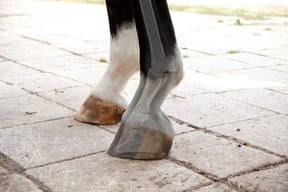
There are two layers that make up a horses' laminae. One layer, the sensitive lamina, is joined to the coffin bone. The other layer is the insensitive lamina, and it's joined to the hoof wall. They connect to each other in an interlocking fashion.
When a horse has laminitis, one or both of the laminae are inflamed. Usually, this happens in the front hooves because they bear the brunt of your horse's weight. Sometimes, in really bad cases, the layers of the horse's laminae separate from the hoof wall or coffin bone and cause the bone to rotate or sink down.
Symptoms
The clinical signs of laminitis in horses are:
- Front limb (occasional back limb) lameness
- Leaning back to on rear limbs to relieve pressure
- Lameness is evident, especially on hard ground
- Resting position requires shifting to get comfortable
- Digital pulse is stronger and easier to detect
- Sensitive on the frog area when examined
A horse could have some, all, or none of these signs of laminitis in horse symptoms. Each horse is unique, so you’re best to consult with your vet if you suspect laminitis horse.
Causes
While the science on laminitis causes is catching up, there a few things thought to cause laminitis:
- Nutritional deficiencies
- Infection or sickness
- Obesity
- Trauma
- Steroids
- Equine Pituitary Pars Intermedia Dysfunction (Cushing's disease)
Prevention
The table below outlines some key preventive measures for avoiding laminitis.
|
Preventative Measure |
Benefit to Horse |
|
Provides the nutrients and minerals that your horse requires to keep sturdy hooves. |
|
|
Lush pasture limits |
Lush grass is excessive in sugar and carbohydrates, and intake of a massive quantity of grass can result in colic or laminitis. |
|
Laminitis supplements |
Supplements help limit starch and sugar, both factors that can cause laminitis if consumed in large quantities. |
|
Monitoring during other illnesses |
Watch out for laminitis in the treatment of infections and illnesses as it is often a comorbid disease. |
Treatment Options
There are various horse laminitis treatment options, and as with any horse health problem, you’ll want to get the vet to check your horse out.
Common treatments for horses with laminitis include:
- Horse laminitis supplements
- Pain relief medications like NSAIDs
- Dietary restrictions (e.g. grain)
- Cryotherapy
- Drugs such as Antibiotics, Anti-Endotoxins, Anticoagulants, and Vasodilators.
Ringbone in Horses
Ringbone is a kind of osteoarthritis in horses. More specifically, it’s a term for osteoarthritis that occurs in the pastern and (or) coffin joints in a horses’ lower limbs.
There are two kinds of ringbone in horses that are related to each of these joints:
- Low ringbone in horses (ringbone in the coffin joint)
- High ringbone in horses (ringbone in the pastern joint)
Each of these joints plays a key role in your horse’s movement.
The coffin joint is a large, high-motion joint within the hoof, whereas the pastern joint is a much smaller joint that has a limited range of movement. The pastern joint is located between the top of the hoof and the fetlock and carries a lot more weight than the horse's coffin bone.
Symptoms
Symptoms of ringbone in horses you can look for include:
- Lameness (on and off).
- Mild changes in gait, including short and choppy movement.
- Inflammation around the pastern and coronary band.
- The affected area may be hot to the touch (in acute cases).
- Resistance from the horse to feet being picked out or to raise legs.
- Lack of desire in the horse to move or exercise.
- Sudden changes in the horse's willingness to jump or participate in sport horse activities.
- Trouble or lameness when going downhill.
- The area appears rigid and thickened (with severe ringbone in horses).
These are all not the only signs of ringbone in horses, but indicators that it’s time to call the vet.
Causes
Generally, ringbone in horses is caused by various factors, and no one thing will 100% determine if your horse will get ringbone.
There are various factors that will determine the likelihood of ringbone in horses including:
- Genetics
- Horse’s conformation
- Nutrition in their young life
- Workload
- How often they work or walk on hard surfaces
- How often they jump
- Previous injuries
- Lifestyle factors
Prevention
Unfortunately, it’s impossible to prevent ringbone in horses, but you can take steps to minimize the risk of it developing, or manage mild symptoms to prevent further quality of life issues.
Prevention plans should include:
- Proper shoeing and farriery care.
- Incorporation of joint supplements in your horse’s diet.
- Maintaining a healthy weight for your horse.
- Exercising your horse well and avoiding repetitive strain (like walking or trotting on pavement for long periods of time).
Treatment Options
There are several different options when it comes to treatment for ringbone in horses.
Three of the most common solutions are outlined in the table below.
|
Treatment |
Benefits |
|
Prescription Joint Injections (corticosteroids and hyaluronic acid) |
|
|
Nonsteroidal Anti-Inflammatory Drugs (NSAIDs) |
|
|
Tendon Injury in Horses
Tendons are strap-like elastic structures that attach muscle to bone. Our horses’ bodies are comprised of many tendons, most of which are short and rarely subject to damage. The longer ones, the flexor tendons are more susceptible to damage. These run down the back of the horse’s leg from the hock to the hoof.
There are two types of flexor tendons:
- Deep digital flexor tendon (DDFT)
- Superficial digital flexor tendon (SDFT)
Horse extensor tendons are the tendons that run down the front of the horse’s limb alongside the cannon bone. Damage to these tendons is known as a horse extensor tendon injury.
When we talk about tendon injury horse, we must also talk about ligaments, as the two are both prone to injuries and go hand-in-hand. Ligaments are flexible elastic-like structures that attach bone to bone. Injuries to ligaments can affect the tendons and vice-versa.
Ligaments and tendons play an important role in stabilizing your horse’s joints. Injuries to tendons and ligaments can have a domino effect on the surrounding connective tissues, bones, and joints if left untreated.
Common Injuries
Bowed tendon horse: swelling in the digital flexor tendons of your horse. When the fibers in the tendon are injured and start to heal, they curve outward in the shape of a bow.
Suspensory ligament horse injury: account for around 46% of limb injuries in horses the symptoms of a suspensory horse injury vary depending on where a tear in the ligament is located.
Symptoms
Common symptoms of tendon and ligament injuries include:
- Lameness that develops suddenly
- The area is hot to the touch
- Touching the area causes pain
- Tendon swelling
- Inability to bear weight on the leg or hoof
Causes
Horse tendon and ligament injuries most often occur during exercise. Strenuous exercise can tear fibers, especially in unfit horses or horses that have not properly warmed up. Most injuries occur during intense running or jumping, especially on level ground.
Prevention and Treatment Options
The three categories to treat and prevent tendon injury horse are:
- Prescription medications and treatments
- Horse ligament supplements
- Alternative therapies
Horse ligament supplements can be taken daily for building, repairing, and maintaining strong joints and muscles. The stronger and healthier a horse’s joints, the less likely they are to suffer from ligament and tendon injuries.
Equine supplements like TRI-ACTA H.A. for Equine contain active ingredients to promote joint health:
- Glucosamine: Repairs cartilage and tissue
- Chondroitin: Contributes to the prevention of the breakdown of cartilage
- MSM: Relieves pain and inflammation
- Hyaluronic acid: Increases the viscosity and quality of the synovial fluid
TRI-ACTA H.A. for Equine
Our maximum strength formula is perfect for horses that are ageing, experiencing arthritis and stiffness, are in training and competition, or under a heavy workload.

For more severe horse tendon injuries, your vet may recommend surgery or tendon injections. Surgery is recommended in cases where there are tendon lacerations or infections. Tendon injections might be suggested to assist with short-term healing, such as stem cells or platelet-rich plasma.
PSSM in Horses
Polysaccharide storage myopathy (PSSM) is a muscle-cramping disorder in your horse’s limbs. PSSM in horses occurs when a horse’s muscles hold on to an abnormal amount of sugar, called glycogen. Their body cannot use their extra glycogen for energy, and as a result, your horse’s muscles become sore and tight.
Symptoms
The symptoms of PSSM will typically present between the ages of 3 and 12. Symptoms of PSSM in horses include:
- Stiffness
- Hard muscles
- Muscle spasms
- Lameness
- Struggling in canter
As your horse starts to show symptoms of PSSM, they may display signs of depression or aggression. They may also start sweating or breathing heavily after small amounts of work.
Causes
There are two types of PSSM, and each has a different cause:
- PSSM 1 in horses
- PSSM 2 in horses
PSSM 1 in horses is caused by a genetic mutation that affects the horse’s body’s ability to synthesize glycogen, causing it to produce glycogen continuously.
PSSM 2 in horses does not have a clear cause. Based on genetic testing, horses experience similar symptoms to those with PSSM 1 but do not have the gene.
Prevention and Treatment Options
Unfortunately, there is no way to prevent PSSM in horses. The only way to prevent PSSM 1 from being passed down is to do genetic testing and prevent the horse from breeding.
There is also no cure for PSSM 1 or PSSM 2 in horses. The most effective way to help your horse suffering from PSSM is to manage its symptoms.
The three most important things to you can do to reduce your horse’s PSSM symptoms are:
- Revise their diet to become low on starch and sugar
- Create and execute regular exercise plans
- Provide horse supplements to support muscle and joint health
Your horse may also benefit from horse joint supplements to help reduce inflammation and optimize joint health. Equine joint supplements like TRI-ACTA for Equine contain MSM, which reduces inflammation and decreases muscle spasms.
Navicular Disease in Horse
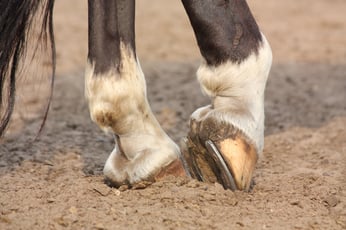
Navicular disease in horses occurs in the navicular bone, a small bone that joins together the hoof bones alongside strong ligaments.
Navicular disease in horse bodies refers to inflammation or other types of degeneration in the horse navicular bone. This may lead to disability or lameness, which means you should take it seriously as soon as you spot the signs.
Symptoms
Knowing when to call the vet is essential, especially for horse navicular bone troubles.
These are the major signs that your horse is dealing with navicular disease:
- Choppy, short steps
- Lameness brought on specific activities (like walking in circles)
- One foot lands before the other constantly
- Weight shifting off one or more feet consistently
- Walks on toes in an attempt to keep weight off
Causes
A few significant factors contribute to the likelihood of your horse experiencing issues with its navicular bone.
Those factors include:
- Poor hoof shape
- Overextending joints
- High weight to size ratio
- Old age
When those factors are present, your equine pal has a higher chance of getting a navicular disease in horses, so it’s important to monitor your horse and contact your vet if you see something concerning.
Prevention
This disease centers on the inflammation and degeneration of a horse's navicular bone, so prevention should work at the joint to reduce inflammation and slow deterioration of the bone.
Using supplements like TRI-ACTA can help to reduce inflammation and give support to the structures around the bone, offering the cushioning your horse’s bones need.
Treatment Options
The most common treatment options for navicular syndrome are:
- Proper shoeing and trimming.
- Prescription of anti-inflammatory drugs.
- Use of bisphosphonates.
- Using extra-strength equine supplements like TRI-ACTA H.A to support joint healing.
Always consult your vet before pursuing any treatment for navicular disease in horses.
TRI-ACTA H.A. for Equine
Our maximum strength formula is perfect for horses that are ageing, experiencing arthritis and stiffness, are in training and competition, or under a heavy workload.

Cushing’s Disease in Horses
Cushing’s disease, also known as Pituitary Pars Intermedia Dysfunction or PPID, is the most common endocrine disorder diagnosed in horses. It is caused by abnormalities in the pituitary gland, leading to normal imbalances affecting many systems in the body.
Symptoms
Both weight loss and weight gain are common in horses with Cushing’s disease. Other symptoms of Cushing’s disease in horses include:
- Excessive hair growth
- Increased water consumption and urination
- Loss of muscle mass
- Fatigue and listlessness
- Muscle weakness or stiffness
- Laminitis
Causes
There are several factors that have been linked to Cushing disease in horses:
- Age (older animals are at greater risk)
- Corticosteroid use (bodies “forget” how to regulate normal levels of cortisol production)
- Laminitis (over 50% of horses with PPID have laminitis as well)
Preventions
Regular checkups with your veterinarian can ensure you diagnose Cushing disease early on. The earlier you detect Cushing disease in horses, the better you can manage symptoms to improve your horse’s quality of life.
Treatment Options
Your veterinarian should be knowledgeable about providing suggestions to manage Cushing disease, as it affects 20% of horses over the age of 15.
Treatment options for Cushing disease in horses include:
- Changes in diet: High protein, high fiber, low carbohydrate diets
- Introducing supplements: DHA, Vitamin C, and E, glucosamine for horses, magnesium
- Medication: Daily dose of pergolide
Kissing Spine in Horses
Kissing spine in horses is a skeletal abnormality when the spinous processes (the small pieces of bone that extend from each vertebrae) touch each other instead of keeping spaced apart. Horses suffering from kissing spine experience pain and inflammation, and well as symptoms of lame horse and in severe cases, horse paralysis.
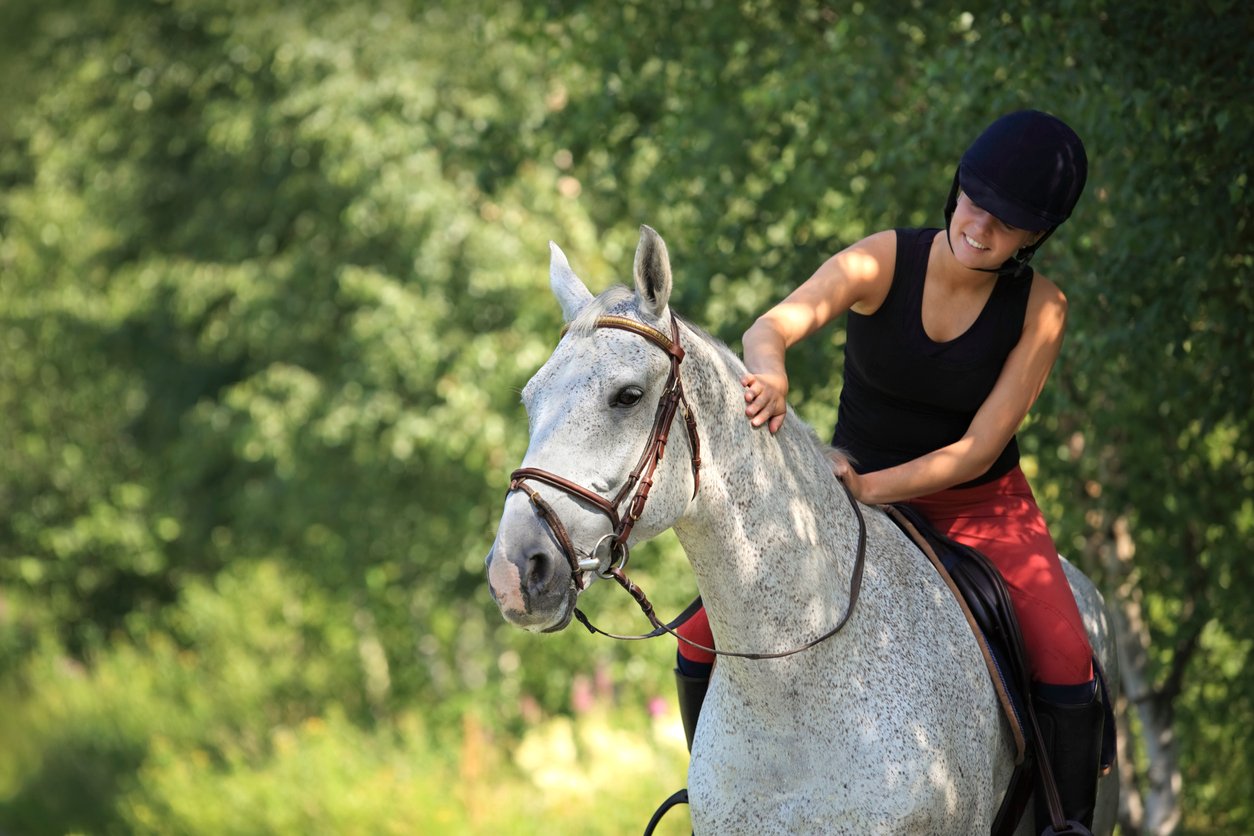
Horse Training Health Considerations
Like athletes training for the Olympics, our performance and sport horses have special health considerations for horse training.
They need to be lean, mean, fighting machines in the best shape to perform.
But you know that much of their performance lies in how you train, prepare and care for your horse.
Your performance horse’s needs will depend on what kind of sport or activity your horse does.
Quarter Horse Racing
Quarter Horse racing started all the way back in the 1940s. Originally, the track was always a quarter-mile long, hence the name. Today, races can range from 250 yard short sprints to long-distance races of 1000 yards.
Quarter Horses are used for Quarter Horse racing, so you can imagine they might have some unique needs in terms of health and nutrition.
We’ve broken down our top 5 tips for Quarter Horse racing training so your quarter horse can feel as good as they look!
1. Proper Equine Tools and Equipment
Some equipment needed for Quarter Horse racing may include:
- Bit, bridle, and reins
- Blinker hoods
- Crop or whip
- Harness
- Horseshoes
- Lead
- Saddle
2. Quality Quarter Horse Supplements
Supplements can be the key to success in Quarter Horse racing. But how do you know what to look for when choosing one?
Make sure there's the following four active ingredients in whichever supplement you choose:
- Glucosamine
- Chondroitin
- MSM
- Hyaluronic acid
When it comes to active ingredients and a therapeutic dose for sport horses, our pick is definitely TRI-ACTA H.A. With no fillers and an easy to serve powder formula, TRI-ACTA H.A. will give your Quarter Horse the joint support they need.
TRI-ACTA H.A. for Equine
Our maximum strength formula is perfect for horses that are ageing, experiencing arthritis and stiffness, are in training and competition, or under a heavy workload.

3. Practice Good Horse Hygiene
To be successful in Quarter Horse racing, you'll need to make hoof care a part of daily routines.
Keeping your horse's hooves excellent and clean for hygiene reasons is genuinely beneficial.
Though each horse is different, you should have a farrier visit booked every six to eight weeks. Your horse's hooves will be reshoed during their visit, and the farrier will trim their hooves.
4. Proper Training
If you're hoping to be in the winner's circle with your Quarter Horse, you'll likely want to hire a trainer.
Like so many things, consistency is key! Build a regular training schedule, and make sure they have gotten the hang of one skill before adding any others to the agenda!
5. Sufficient Rest Time
Though you may not think it to be the case, there is no such thing as too much training.
Your horse's muscles will undergo a breakdown and rebuild while training — it's what makes them stronger. Hence the need for rest.
Plus, it helps them avoid injuries associated with overworking.
Standardbred Racing
If you’re worried about your horse’s standardbred racing standings, you’ve come to the right place.
Standardbreds, a breed of horse best known for their ability to compete in harness racing, trace their origins back to England in the late 1800s. The overseeing body of standardbred racing in Canada has officially existed since 1909.
We’ve gathered the top tips for maintaining and improving your standardbred racing horse’s health.
1. Proper Nutrition for Standardbred Racing
With the additional energy needed to perform at a high level, Standardbred sport horses' nutrition demands special attention.
Standardbred racing horses need specific components in their diet to perform well:
- Large quantity of electrolytes and water
- Balance of carbohydrates, fats, and proteins for energy
- Adequate levels of minerals and vitamins
Without these critical components, your horse won't stand a chance against its competition.
2. Correct Equipment for Standardbred Racing
The right equipment for the job is so important in standardbred horse racing. There’s definitely a list of essentials to consider:
- Harness
- Breast collar
- Bits
- Hopples
- Boots
- Lines
- Bridle
- Ear hood or earplugs
- Shadow rolls
- Additional equipment to keep your horse on a straight path (Murphy blind, Bit burr)
3. Proper Training and Exercise
Just like anything, training is the key to success for standardbred horse racing.
Give your horse space to move around and keep limber. Keep up a regular training schedule to ensure their muscles are not degenerating faster than they should be and they are keeping in good shape.
4. Equine Supplements
Standardbred horse racing puts a lot of strain on your horse’s joints, muscles, and ligaments. It’s important to keep those parts of your horse in good shape for good sport horse performance.
When it comes to choosing a horse supplement for standardbred racing, you need to find a formula that contains active ingredients like glucosamine and is devoid of fillers. We’re especially partial to TRI-ACTA for Equine and its maximum strength counterpart, TRI-ACTA H.A. for Equine. Each of these supplements consists of 100% active ingredients, as well as ingredients like glucosamine to help support overall standardbred horse racing health.
TRI-ACTA for Equine
Providing preventative support for younger horses and helping mitigate the early onset of joint degeneration and other mobility issues.

5. Proper Recovery and Rest
Nothing matters more than the right rest and recovery if you have sports horses. Here are a handful of good suggestions which work nicely for pre-existing or current injuries, as well as preventative care:
- Regular trips to a qualified equine veterinarian.
- Hoof care from a skilled farrier.
- Massages to relax muscles and tension.
- A warm, comfortable environment with enough space to roam.
- A proper diet complemented by quality horse joint supplements.
- Physical therapy.
Equestrian Dressage
From the French word ‘dresseur’ –meaning to train–horse dressage is the highest form of horse training.
As elegant as it may be when executed to perfection, dressage horse comes with its own set of risks including injuries and horse joint problems.
According to the American Association of Equine Practitioners, the most common problems and injuries in dressage horses are:
- Inflammation or tearing of the suspensory ligament
- Suspensory branch injuries
- Degenerative joint disease of the hock
- Degenerative joint disease and inflammation of the fetlock
- Inflammation of the knee joints
Preventative measures, such as implementing equine joint supplements, can be taken to minimize the risk of injuries for horses involved in dressage training.
General Horse Training
Whether you’re starting out with your very first leisure horse, or seasoned in the world of sport horse performance, you never stop learning new and improved ways to enhance your horse training regime.
Though it is an integral component, exercise is not the only pillar of a good horse training program.
A horse training program should include:
- Exercise
- Strength and conditioning
- Diet plan
- Medical care
- Supplements
One of the most valuable things you can learn as a horse trainer is the basics of incorporating horse supplements during horse training.
Equine supplement categories include, but are not limited to, the following:
- Vitamins and minerals
- Joint supplements
- Hoof care supplements
- Skin and coat supplements
- Weight gain supplements
- Digestive support supplements
Equine Joint Supplements in Horse Training
Horse joint health is so important because the joints are the highly specialized junctions where two bones meet and are responsible for the horse’s movement.
All horses can benefit from incorporating joint supplements for horses into their daily training program.
The most important ingredients in horse joint supplements include:
- Glucosamine: Repairs cartilage
- Chondroitin: Prevents breakdown of cartilage
- MSM: Reduces pain and inflammation
- Hyaluronic acid: Promotes increased viscosity of joint synovial fluid
TRI-ACTA H.A. for Equine contains all four of these active ingredients to promote joint health. It is recommended for senior horses, or horses recovering from injuries. TRI-ACTA for Equine is the regular strength joint health supplement that can be taken daily for the maintenance of healthy joints and injury prevention.
Horse Grooming Kit
Horses spend a lot of time out on the pasture, in the training ring, and out on long leisurely rides through the country. With all this time spent galloping and grazing in the great outdoors, it's no wonder that horses require a lot of grooming.
A horse grooming kit includes:
- Brushes
- Combs
- Detanglers
- Shampoo
- Hoof pick
- Sponge
Grooming is an essential part of equine health care, and a great way to spend time and bond with your horse.
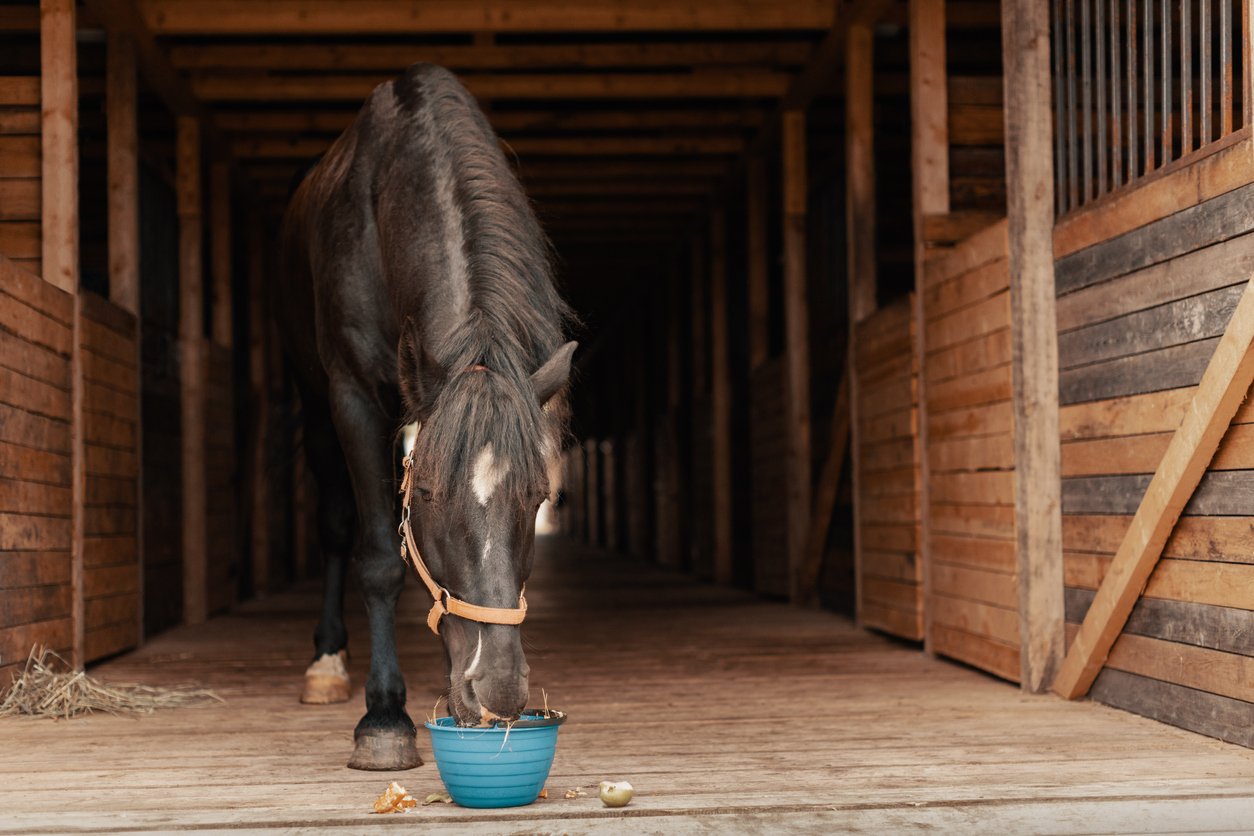
Hyaluronic Acid for Horses
No, it’s not the latest trend in equine skincare, but hyaluronic acid for horses is used to optimize horse joint health.
Just like hyaluronic acid is a natural substance in our skin, it’s also an essential substance naturally found in the joints, including those in our horses.
Hyaluronic acid supplements for horses help maintain your horse's health by:
- Lubricating the joints
- Reducing inflammation and pain
- Providing powerful antioxidants
In addition to joint health, hyaluronic acid for horses is used to promote healthy skin, connective tissues and eyes.
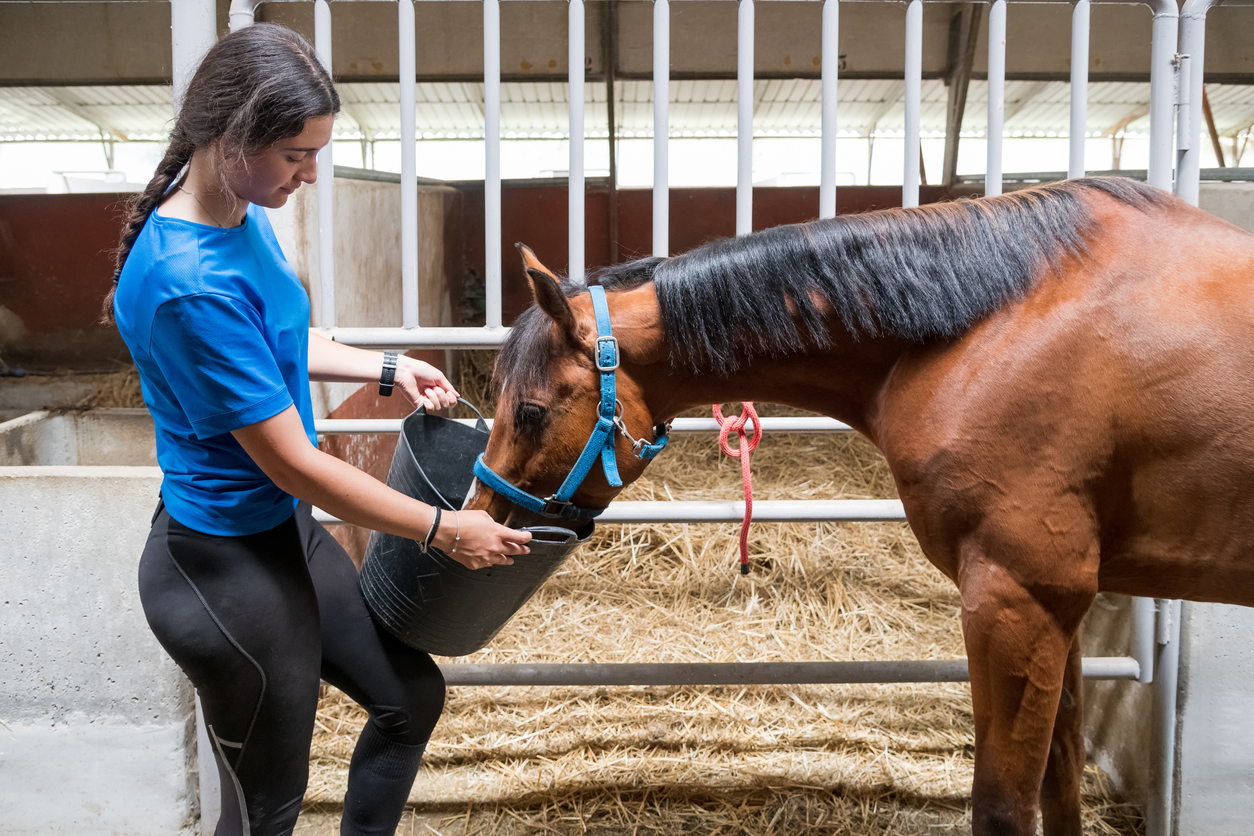
Glucosamine Chondroitin for Horses
Glucosamine and chondroitin are both naturally occurring substances in the horse’s body. They help to maintain healthy cartilage in the horse’s joints.
The table below shows how glucosamine chondroitin for horses support cartilage health and reduce cartilage deterioration.
|
Glucosamine |
|
|
Chondroitin |
|
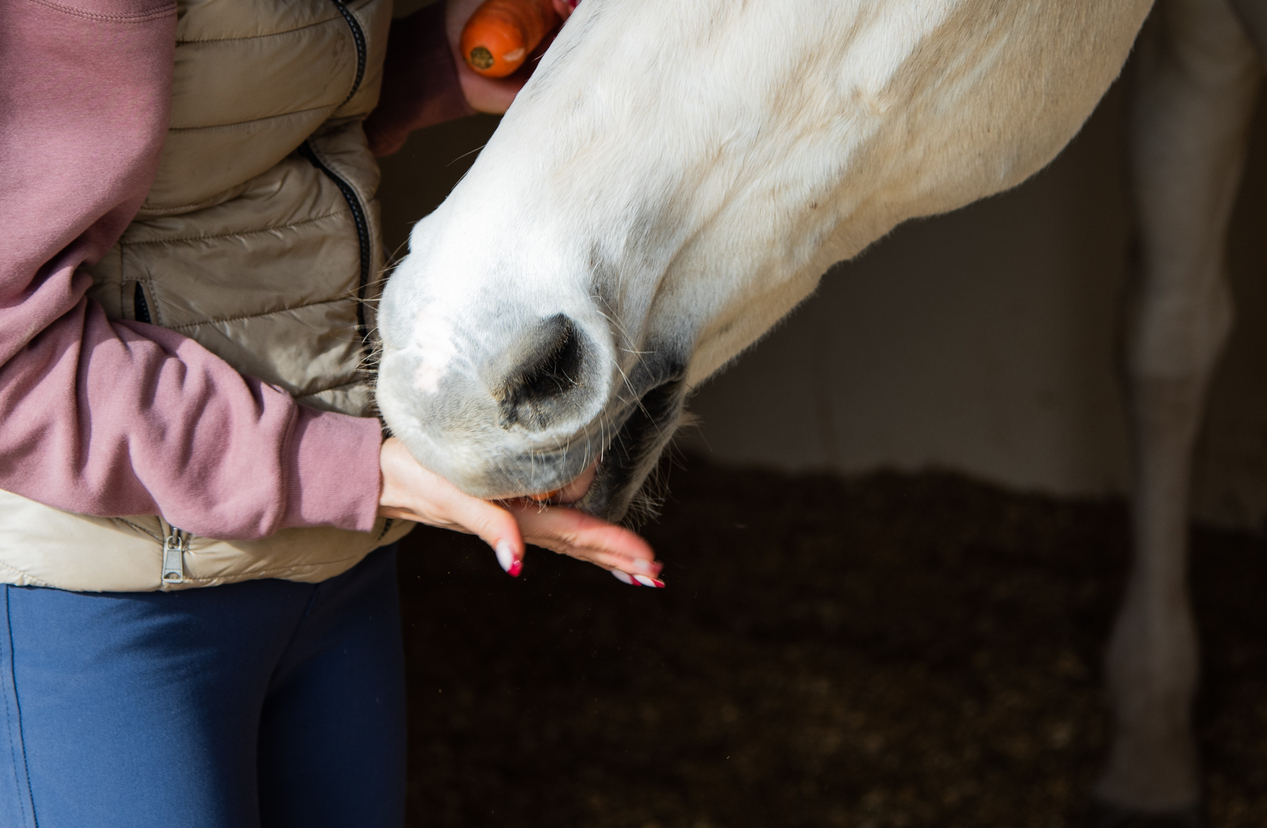
Horse Supplements
Every horse has different needs based on its lifestyle, just like us humans.
There are factors such as age, medical history, and activity level all influence your horse’s unique needs. So it’s no surprise that some horse supplements will better suit your horse’s needs than others.
Benefits of Joint Supplements for Horses
There are many ways to take care of your horse’s health using natural remedies and lifestyle modifications. Two of the best actions you can take are:
- Feed your horses a healthy diet.
- Use premium supplements to provide an extra boost of essential ingredients.
And when it comes to joint health, there are four active ingredients to look out for:
- Glucosamine: Repairs cartilage
- Chondroitin: Prevents breakdown of cartilage
- MSM: Reduces pain and inflammation
- Hyaluronic acid: Promotes increased viscosity of joint synovial fluid
If you’re thinking about trying horse supplements, the best thing you can do is arm yourself with more information and contact your veterinarian.
Types of Horse Supplements
No two supplements are the same — and that’s because they all solve different problems for your horse!
Knowing where you’re going is the first step to get there, as they say, so let’s get into the different types of horse supplements available.
Senior Horse Supplements
It’s possible for a horse to live well into their 30s, as long as they get proper care. So, as horses reach age 15 or older, they are considered a senior horse.
Depending on the lifestyle a horse has lived, they may experience conditions like arthritis. Some horses who competed or led particularly active lives can be more likely to get arthritis. Adding senior horse supplements to help alleviate pain and stiffness often associated with arthritis is a great way to comfort a senior horse.
Horse Performance Supplements
Performance horse supplements contain ingredients that help active horses maintain their health and recover as they work, train, and compete.
Due to their high levels of activity and history of making repetitive motions, performance horses experience more wear and tear on their joints than domestic horses.
Performance horse supplements are one way you can help your active performance horse avoid injuries. Supplements provide numerous benefits to your performance horse, including:
- Preventing muscle soreness and pain.
- Reducing inflammation and injuries.
- Promoting faster recovery.
In particular, ingredients like glucosamine and chondroitin are vital when searching for powerful horse supplements, as they provide relief from joint issues as well as prevention.
Arthritis Supplements for Horses
Arthritis is caused by the deterioration of cartilage, often in weight-bearing joints. More specifically, the loss of the cartilage means there is less available to cushion joints from impact. Additionally, the breakdown of cartilage leads to the loss of synovial fluid, which helps to lubricate joints.
Over time, losing cartilage leads to pain and even lameness in horses.
Fortunately, arthritic horses can benefit from equine arthritis supplements. Feeding your horse a supplement can help:
- Relieve pain
- Improve joint mobility
- Repair cartilage
When choosing a supplement for a horse with arthritis, you’ll want to pay close attention to the ratio of active to inactive ingredients. The more active ingredients, the better. We have a handy resource to help you learn how to read a supplement label.
Natural Horse Supplements
Natural horse supplements often use plants, such as herbs, to maintain superior horse health.
There are a few herbs that frequently appear in natural supplements:
- Devil’s Claw
- Yucca
- Boswellia
- Rosehips
Natural horse supplements can include a mix of such herbs or are sometimes made entirely from one type of plant. Many natural horse supplements come in powdered or pellet form, just like traditional supplements. Always remember to check in with your vet before adding anything new to your horse’s diet.
Horse Joint Supplements
By feeding your horse the right diet and keeping their exercise regimen up, you can help prevent various health conditions, from suspensory ligament injuries to arthritis.
But sometimes, it’s just not enough.
To make up for the shortfall in their diet, you can level up your horse’s joint health with an equine joint supplement.
The right horse joint supplement will help maintain good cartilage, ligament, and tendon health. That way, your horse can enjoy an active lifestyle without worrying about getting injured.
You should look for a horse joint supplement that includes glucosamine, chondroitin, MSM, and hyaluronic acid.
But what makes these ingredients so important to your horse? They each offer a unique benefit to overall horse health and can be even more powerful when used in combination.
For example, glucosamine helps to repair cartilage that is damaged already, and chondroitin helps to stop cartilage from breaking down in the first place. Meanwhile, MSM will give your horse reduced pain from inflammation in the joint and hyaluronic acid makes for more lubricated, mobile joints.
When you’re shopping for a joint health supplement that will support your horse’s joint health, look no further than TRI-ACTA H.A. It contains therapeutic doses of all of the ingredients we just listed, plus there are no fillers to worry about.
TRI-ACTA H.A. for Equine
Our maximum strength formula is perfect for horses that are ageing, experiencing arthritis and stiffness, are in training and competition, or under a heavy workload.


3 Key Considerations When Choosing Horse Supplements
As a caring horse owner, you want to make sure your equine pal gets the best supplement available for their needs.
But before you hit ‘add to cart’, you might want to think about a few things first, including:
- Knowing how to read a supplement label
- Knowing what criteria you should look for in a supplement
- Knowing how to evaluate your picks for a supplement
Once you are armed with this knowledge, you’ll be able to pick the right supplement for your horse’s needs.
1. How to Read a Supplement Label
When it comes to shopping for a joint supplement, it’s important to know precisely what ingredients you’re getting. But that’s not to say it’s easy! Thankfully, we’ve got you covered with our handy guide on how to read a supplement label.
You need to consider what the balance between inactive and active ingredients is in the supplement. Often there are fillers that makeup 50-80% of a product. TRI-ACTA, and TRI-ACTA H.A. offer your horse zero fillers and small, easy-to-administer dosages. Both of our equine products contain therapeutic amounts of active ingredients because of the purity and concentration in the formula.
2. Criteria on What to Look For in Supplements
This handy table explains which criteria to look for in horse supplements, and why they’re important for your reference when you’re shopping.
|
Critical Factors |
Why They’re Important |
|
Health benefits, a.k.a. the presence of key active ingredients |
|
|
Quality and source of ingredients |
|
|
Backed by scientific research |
|
|
Dosage at therapeutic levels |
|
|
Approval status |
|
|
The manufacturer’s commitment to horse health and happy customers |
|
3. Evaluation Tips for Horse Supplements
When ranking the best supplements for horses out there, we suggest you evaluate and compare them using the following tips.
1. Ingredients
When choosing equine joint supplements in Canada, you want to understand exactly what’s listed in the ingredients of your horse’s supplements. Skip fillers and look for active ingredients instead.
Specifically, there are three essential, science-backed ingredients to look for in equine joint supplements :
- Glucosamine
- M.S.M. (Methylsulfonylmethane)
- Chondroitin Sulfate
2. Price
Every horse owner knows that the cheapest isn’t always the best. Still, it’s important to choose an equine joint supplement that is the best value for money.
Fillers can often be added to a supplement for horses to make it appear more cost-effective, but that means you actually miss out on getting a truly therapeutic dose for your horse.
3. Product range
When considering a brand of supplement, you should also consider a few things about their complete product lineup. For instance, Integricare focuses only on its range of joint health products for both horses and pets, and we’ve built ourselves a reputation for quality in that space.
When you choose a brand that has a reputation for being a leader in their field with reputable veterinarians, trainers, and affiliates backing up the specific supplement products designed for horses, that’s one sign that you can trust their products.
4. Product benefits
You should always ask yourself before adding a supplement for horses exactly how it will benefit your horse. Make sure their claims are supported by case studies and scientific research. That way, you know their benefits go beyond a marketing ploy.
5. Customer Service/Post-Sale Support
As with any purchase, you should be able to get in touch with the company selling the supplements for horses you buy. Whether it is for a return, to ask questions or to get advice on using the product, the company should be easily accessible by email, chat or phone.
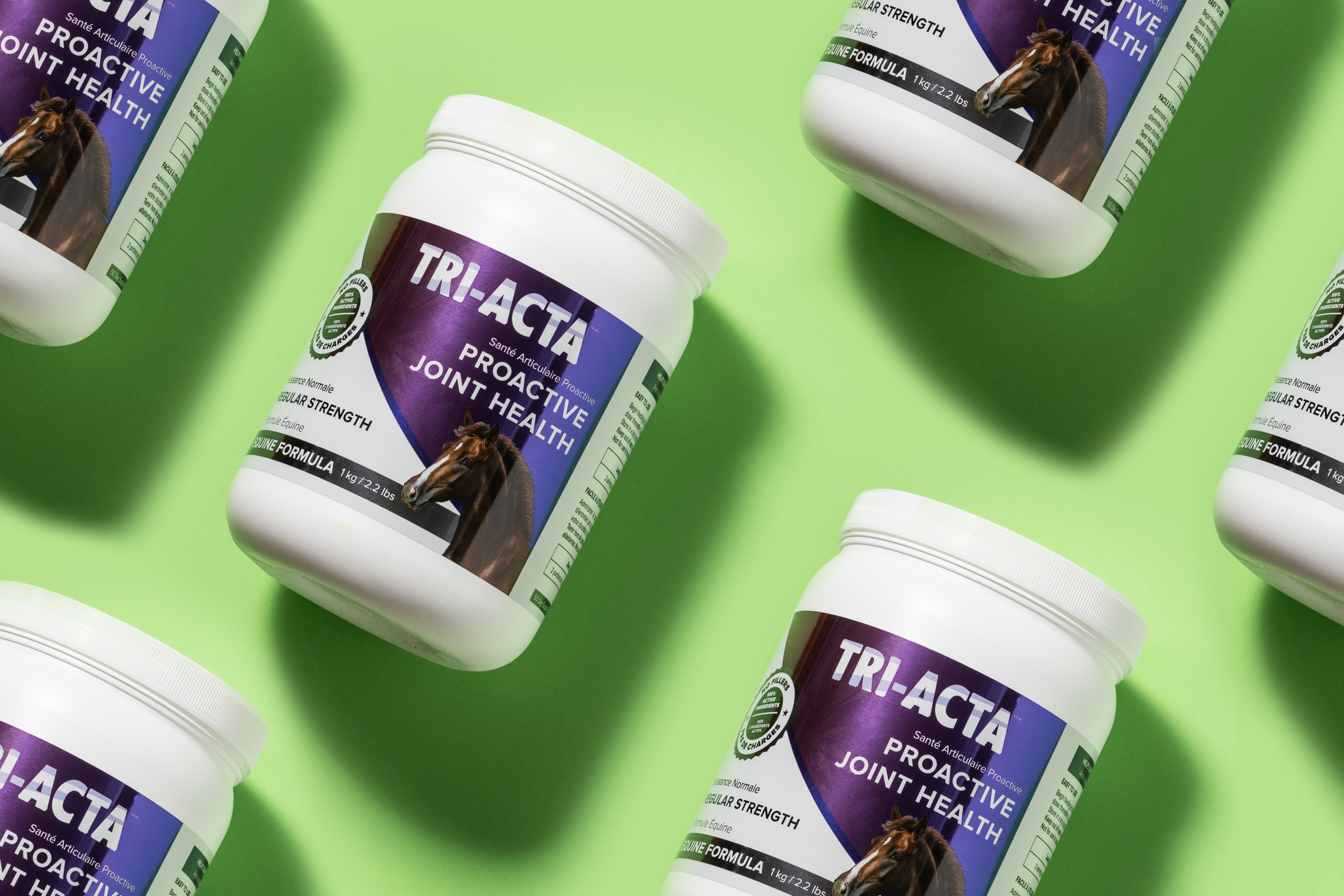
Best Horse Supplements for Mobility
If you’re searching for a horse supplement, you should make sure that:
- The supplement is a reputable product.
- Offers high-quality ingredients
- Has research to back up the claims it makes
We know there are endless options to choose from, so we’ve compiled the top options for horse supplements into a handy list so you can select an option that truly benefits your equine pal’s health.
1. Integricare TRI-ACTA H.A. (Max Strength)
The number one spot on this list is none other than our very own TRI-ACTA Equine H.A., the maximum strength version of our sister product, TRI-ACTA, and the gold standard supplement for active horses. Modestly speaking, we’re a pretty cool supplier of premium health supplements for horses, cats, and dogs.
But don’t even think that we’re just placing our product first for the sole reason it’s ours.
No way, José!
It’s because we’ve set out to make the best joint supplements for horses in North America, and we think we’ve succeeded.
What makes TRI ACTA so unique?
- High-quality active ingredients (two types of glucosamine, chondroitin, MSM, and hyaluronic acid)
- No fillers
- Therapeutic dosages that are easy to feed due to tiny 20 g serving sizes
- Ethical sourcing and manufacturing
- Health Canada approved
At a low cost-to-serving ratio, TRI-ACTA H.A. packs a punch. This supplement has the highest, all-active ingredient formula on the market.
TRI-ACTA H.A. for Equine
Our maximum strength formula is perfect for horses that are ageing, experiencing arthritis and stiffness, are in training and competition, or under a heavy workload.

* Priced $129.99 – $369.99 CAD as of May 2023
2. Integricare TRI-ACTA (Proactive Care)
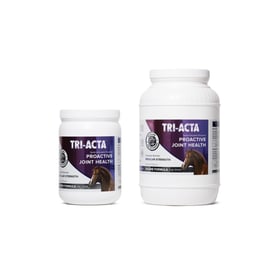
When shopping for a reputable brand of equine joint supplements canada, look no further than TRI-ACTA for Equine. TRI-ACTA contains 100% pharmaceutical-grade, active ingredients, and no fillers, so you can ensure you are giving your horse the nutrients it needs and nothing more.
Similar to our maximum strength formula above, our regular strength formula is meant as a preventative solution for joint issues in horses. Our 20 g daily serving of TRI-ACTA provides your horse with the therapeutic dose of key, all-active ingredients needed to prevent and mitigate the onset of joint degeneration. This is especially key for younger horses as a proactive solution!
The key product features include:
- Promote joint mobility and flexibility
- Maintain collagen and connective tissue
- Protect joint tissues
- Decrease stiffness
- Improve mobility
TRI-ACTA for Equine is a trusted, Canadian brand of horse nutrition supplements, clinically proven through scientific studies to support optimal joint health and mobility.
TRI-ACTA for Equine
Providing preventative support for younger horses and helping mitigate the early onset of joint degeneration and other mobility issues.

* Priced $89.99 – $259.99 CAD as of May 2023
3. Grand Meadows Grand H.A. Synergy
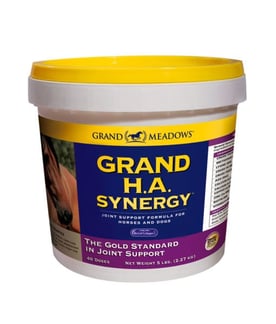
The next product we’ll discuss in this list comes from the Californian company Grand Meadows.
Like other performance joint supplements for horses presented in this list, it contains the four key active ingredients: glucosamine, chondroitin, MSM, and hyaluronic acid. However, there’s too little glucosamine and chondroitin in the recipe.
It’s best used as a less potent alternative for lower-intensity sport horses that only need early preventive support.
* Priced $166.88 – $740.72 CAD as of May 2023
4. Absorbine Flex+ Max
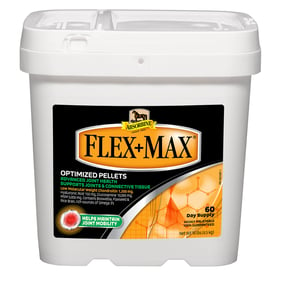
Absorbine’s Flex + Max comes in pellet form and has all of the best equine joint supplements’ building blocks: Glucosamine, Chondroitin, MSM, Hyaluronic Acid, along with Boswellia Serrata and rice bran.
Boswellia serrata has been known to help decrease inflammation since medieval times. Rice bran is another story – it can be made up of about 20% starch! Starch is not helpful for horses in general.
You can check out the full-scale ingredients analysis to see exactly what each ingredient does in this product, which is very useful!
* Priced $110.33 – $204.73 CAD as of May 2023
5. Equithrive Complete Joint
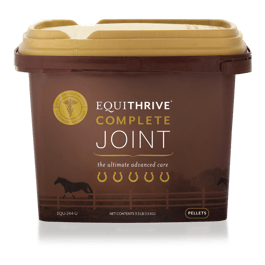
While there is plenty to appreciate about this product, including all of the key active ingredients we like to see, it also contains an anti-inflammatory antioxidant called Resverasyn. This component is 99% resveratrol.
There isn’t any significant evidence to back up these claims that Reverasyn is beneficial for horses. It isn’t found in their natural diet, and while it could be helpful, we just don’t have the proof.
Equithrive includes inactive ingredients like vegetable oil, flaxseed oil, flaxseed meal, water, yeast culture and natural flavours. This is mostly okay, but you need to keep every other aspect of your horse’s diet in check. When your horse consumes too much fat, they will gain weight and with that comes possible health complications.
* Priced $209.10– $582.36 CAD as of May 2023
6. Majesty’s Flex XT Wafer
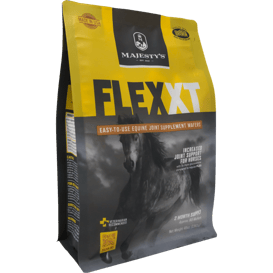
The only wafers to break into our list are Majesty’s Flex XT joint supplements for horses.
They are a very affordable option if your horses aren’t picky eaters and love snack time.
Otherwise, you might struggle with this product!
Alongside decent (but not perfect) levels of glucosamine, MSM, and chondroitin, Majesty’s has also included Yucca Schidigera in these wafers. This plant is suggested to have natural anti-inflammatory effects and could be beneficial for joint pain.
* Priced $102.10 CAD as of May 2023
7. Ramard
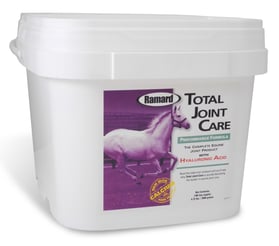
Ramard, a leading American manufacturer with a strong emphasis on “Made in the USA” products, is another good pick for a domestic horse joint supplement. Their Total Joint Care is an excellent blend that’s entirely made up of active ingredients, including the big four: glucosamine, chondroitin, MSM, and hyaluronic acid.
There’s really only one reason it falls behind TRI-ACTA.
It has significantly less glucosamine (4000 mg) and MSM (4500 mg) per serving size, making it a less potent supplement.
* Priced $104.80– 148.06 CAD as of May 2023
8. Mojo Joint
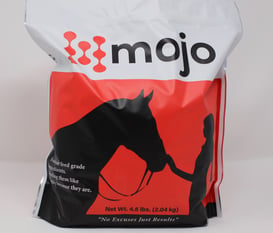
Next in our selection of horse joint supplements is Mojo Joint. And it’s more than just a catchy name!
This is a quality product with a ton of potential, but, unfortunately, it falls short in a couple of important departments (which is why it’s just the fifth).
It doesn’t contain chondroitin, glucosamine’s best friend, and partner in healing.
It features too many extra ingredients (like vitamins) and a mystery substance called a “binder.”
* Priced $95.34 – $681.11 CAD as of May 2023
9. YuMOVE Plus for Horses
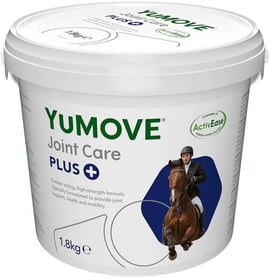
This supplement contains 25% more MSM and high-strength glucosamine than its traditional formula. It also contains hyaluronic acid. Perhaps more interestingly, it also has omega 3s sourced from the green-lipped mussel.
Of course, always be sure to check in with your vet before adding a new supplement to your horse’s feeding routine.
* Priced $187.27 CAD (converted from GBP) as of May 2023
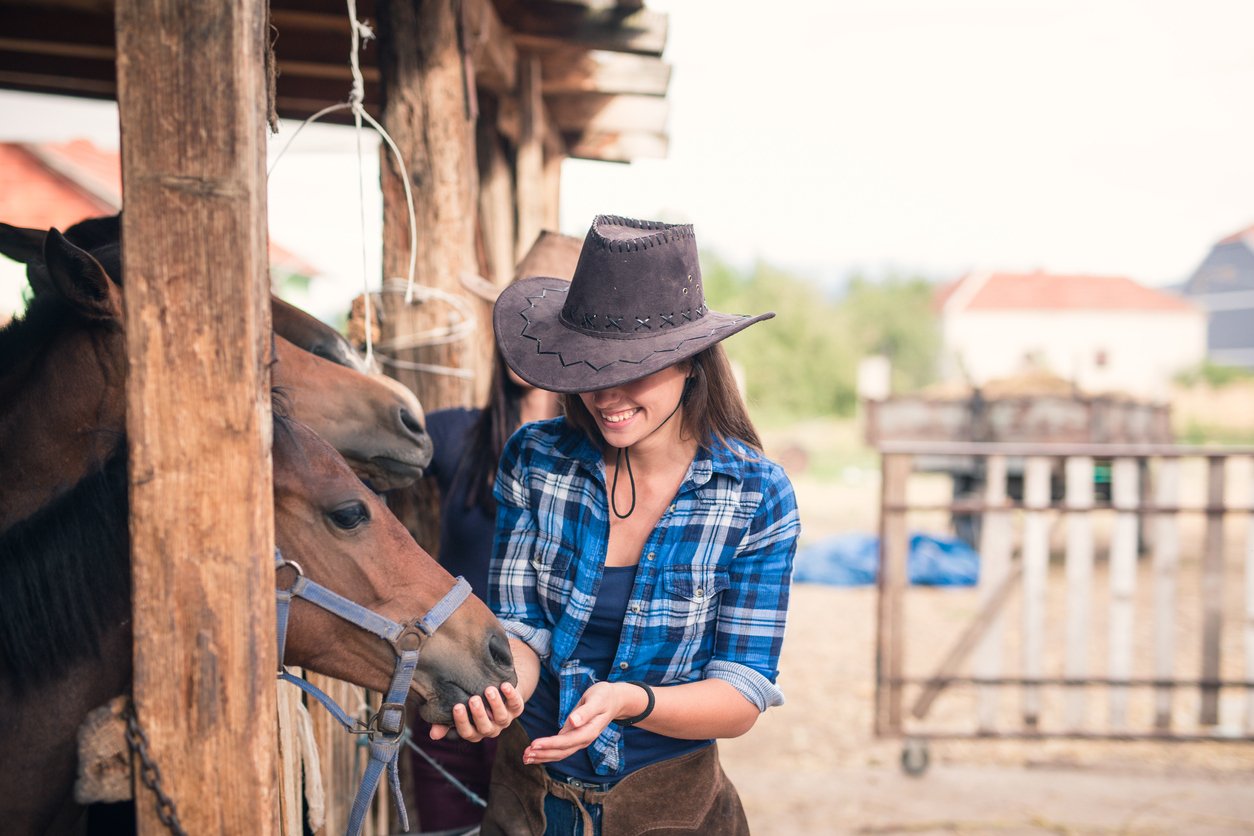
Additional Horse Health Supplements
Horse health supplements can be a wonderful addition to your horse’s health and training program. Even high-quality horse diets can be lagging in certain vitamins and nutrients for your sport horse's performance or your leisure horse’s vitality.
Equine supplements include:
- Joint health supplements
- Skin and coat supplements
- Digestive supplements
- Hoof health supplements
- Performance supplements
When shopping for the best horse health supplements, it is important to consider the following three things:
- Quality ingredients: Pharmaceutical-grade, certified, verified ingredients
- Efficacy: Scientific evidence and customer testimonials
- Active ingredients: Pure and natural ingredients in therapeutic doses
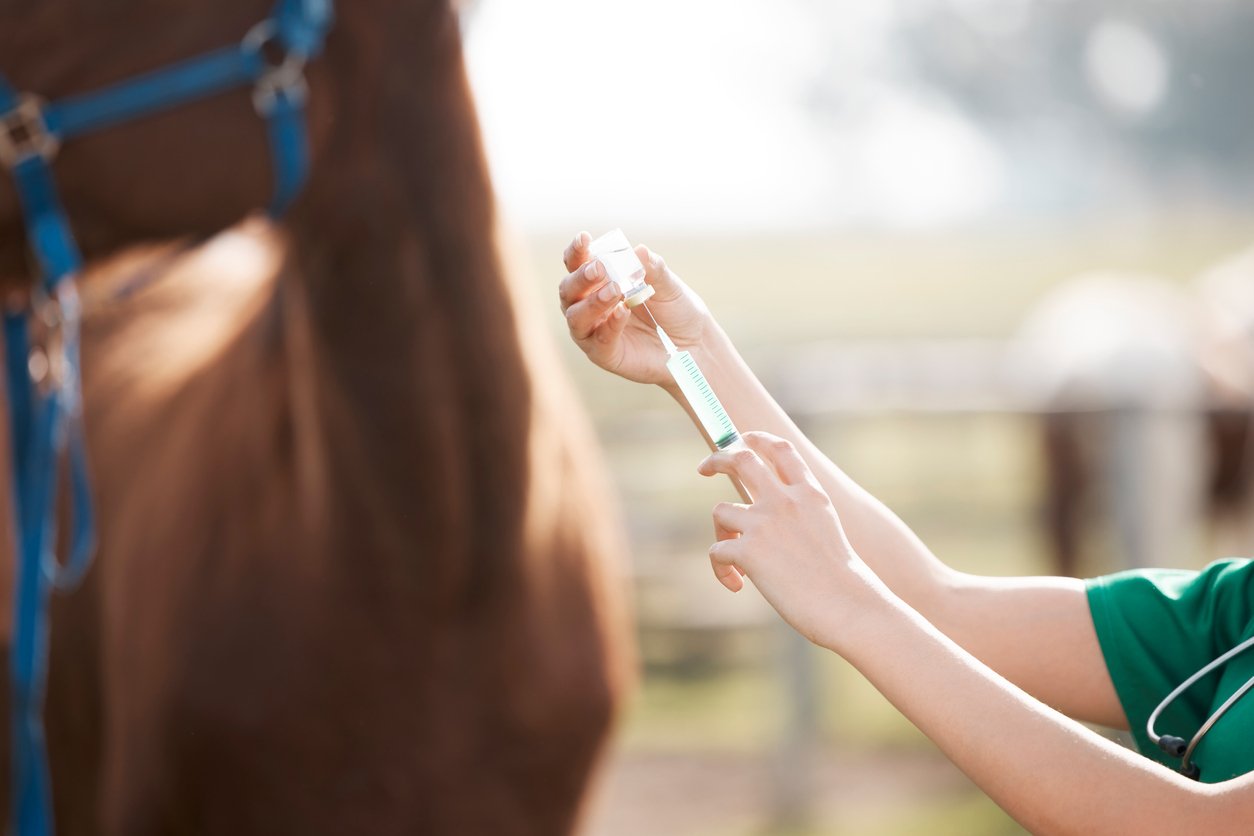
Other Horse Treatments
Horse Joint Injections
Also known as intra-articular (IA) injections, horse joint injections are a medical treatment that use a needle to inject a substance into a horse’s joint. The substance is a medication used to reduce inflammation and ease pain in the injured areas of your horse’s body.
Injections are administered by a professional equine veterinarian as part of a post-surgery rehabilitation plan, to treat injuries or as part of a performance maintenance program.
The common joints to inject with horse joint injections are:
- Stifle
- Hock
- Coffin
- Sacroiliac joint (SI)
- Lumbar
There are several types of horse joint injections available. The most common horse joint injections used by equine veterinarians are:
- Hyaluronic acid for horses: Helps joints stay lubricated and healthy as they age
- Glucosamine injections for horses: Provides the building blocks required to rebuild cartilage
- Corticosteroid injections: Provides immediate relief from inflammation by reducing swelling
- Polysulfated glycosaminoglycans (PSGAGs): Reduces pain and swelling in joints and increases mobility
The chart below outlines preparation and post-care tips for horse joint injections.
|
Preparation for Horse Injection |
Post-Care for Horse Injections |
|
|
Equine veterinarians recommend supplementing the horse joint injections with horse joint supplements. TRI-ACTA H.A. for Equine is specially formulated to support the joint health of senior horses, horses currently experiencing joint issues or regularly engaging in strenuous activities. The hyaluronic acid added to this formula can improve the supply and viscosity of the synovial fluid to restore mobility and joint health.
TRI-ACTA H.A. for Equine
Our maximum strength formula is perfect for horses that are ageing, experiencing arthritis and stiffness, are in training and competition, or under a heavy workload.

Horse Anti Inflammatory
We put a lot of pressure on our ponies. Whether we ride them for leisure or train a performance horse, all the hard work and heavy lifting comes with the wear and tear of a horse’s limbs, joints, muscles, and tendons. Over time, this wear and tear leads to pain and inflammation. After all, inflammation is the body’s natural response to injury and sickness.
Signs of inflammation in a horse include:
- Lameness
- Pain
- Swelling
- Heat
- Loss of joint function
When a horse’s joints become inflamed, rest and a horse anti inflammatory treatment are needed for recovery.
The top three horse anti inflammatory treatments include:
- Equine NSAIDs (Non-steroidal anti-inflammatory drugs)
- Joint supplements
- Hydrotherapy (ice baths)
Equine joint supplements containing glucosamine, chondroitin, and MSM are the preferred long-term horse anti inflammatory amongst veterinarians and horse owners. MSM horse supplements have potent anti-inflammatory properties and effectively reduce and prevent pain from common horse health problems.
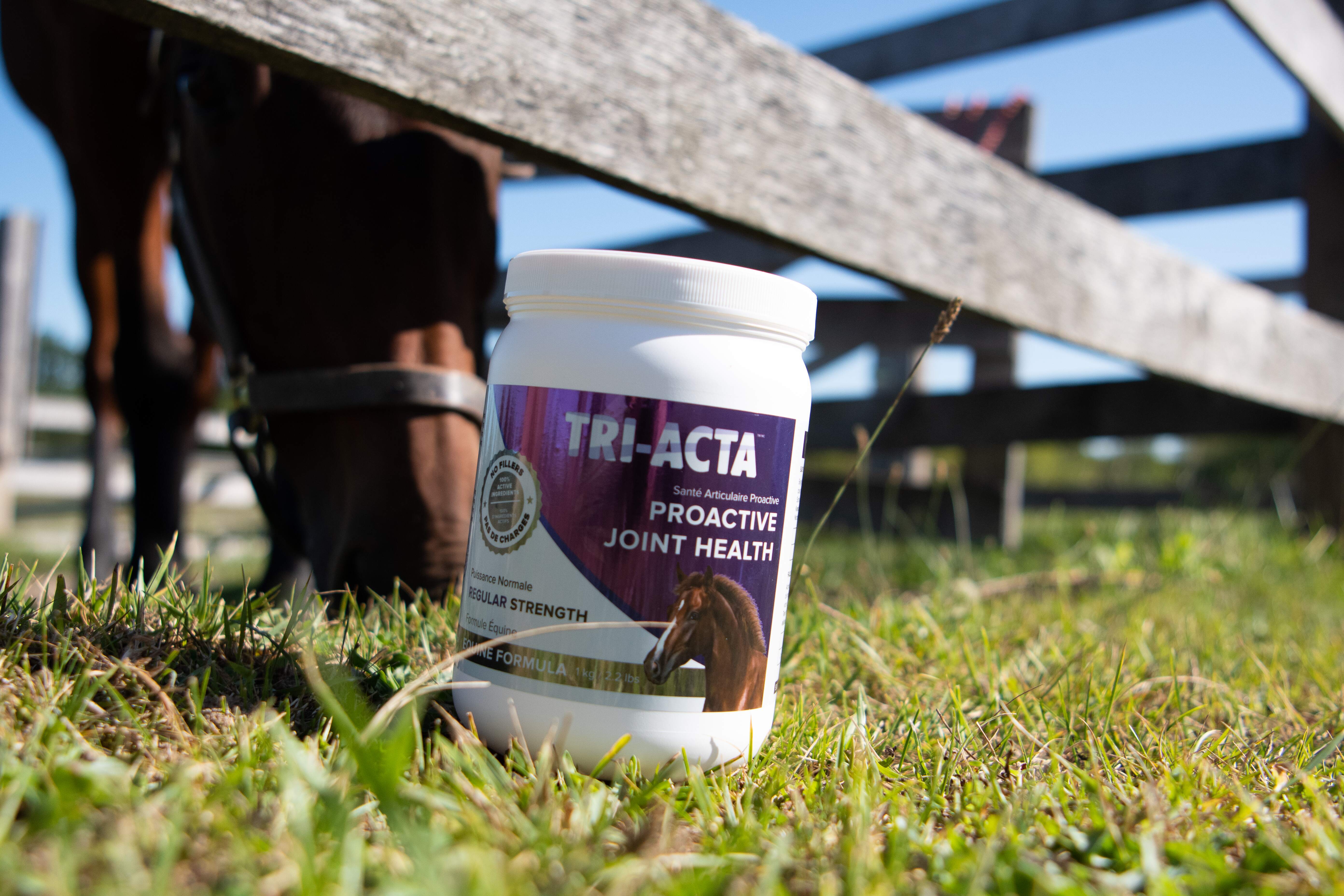
Common Horse Supplements FAQs
Do Horse Supplements Really Work?
Scientific research tells us that horse joint supplements really work. They work to support your horse’s joint health in more ways than one using the key active ingredients found in the TRI-ACTA formula — glucosamine, chondroitin, MSM and hyaluronic acid.
Each of these ingredients plays a key role in supporting joint health:
- Hyaluronic Acid: A naturally occurring substance in horses’ and humans’ bodies, hyaluronic acid helps to increase the viscosity and supply of synovial fluid or joint fluid in joints that articulate.
- Glucosamine: Another naturally occurring substance found in your horses’ body, glucosamine is the key building block in joints. It leads to the repair and maintenance of glycosaminoglycans (GAGs) and proteoglycans. This is essential for good joint health and support.
- Chondroitin Sulfate: This component helps prevent cartilage from breaking down or deteriorating. It does this by inhibiting the destructive enzymes that wear away cartilage.
- MSM (Methylsulfonylmethane): Another key component in joint health and repair is MSM. It reduces pain and stiffness in the joints by reducing inflammation.
Can You Give Horse Supplements to Dogs?
No. While dogs, too, can benefit from supplementation, they have entirely different body composition and nutritional needs than horses. They also will require different dosages than your horse does, and in different concentrations of ingredients too.
That’s why we offer our TRI-ACTA and TRI-ACTA H.A. in a format specially designed for your furball at home, with their own dosage guidelines and ingredient concentration — plus all of the benefits of an Integricare product. No fillers, just active ingredients in small, easy-to-serve portions. You can even order it online alongside your equine products!
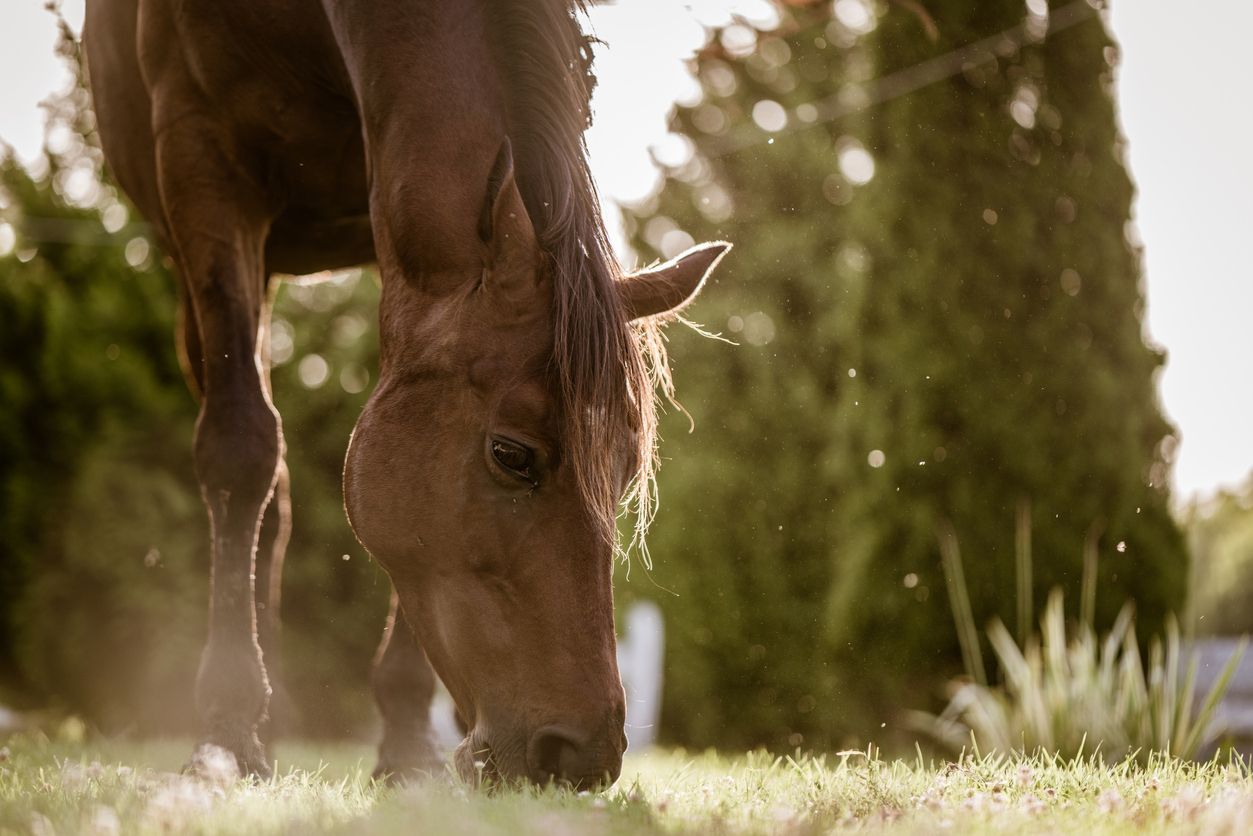
Final Thoughts on Horse Supplements
We know you want your horse to live a long and fruitful life, whether that means frolicking in a pasture or racing on a track. Horse supplements help make that happen.
The right supplement for your horse will change depending on your horse’s needs. Your arthritic horse is going to need something a little different than your performance horse.
And now, you know exactly how to choose the right horse supplement for your best pal!
TRI-ACTA for Equine
Providing preventative support for younger horses and helping mitigate the early onset of joint degeneration and other mobility issues.

If you have any specific questions about choosing a supplement for your horse, please don’t hesitate to contact us. We’re always happy to assist.

